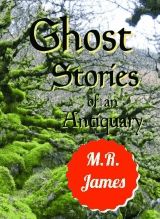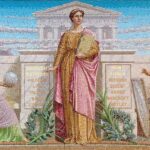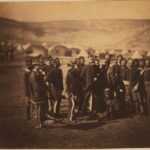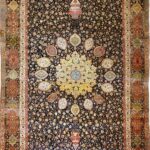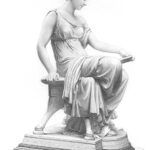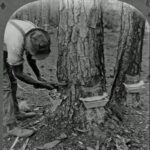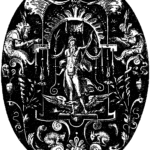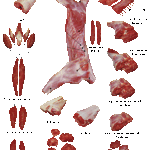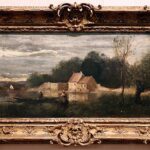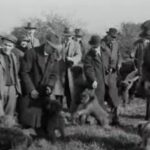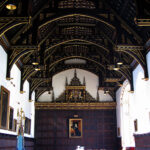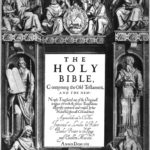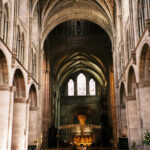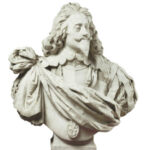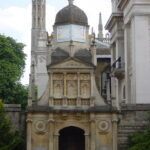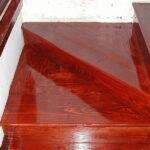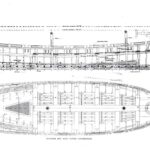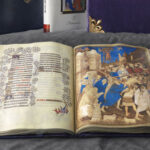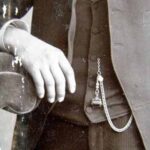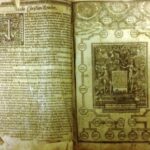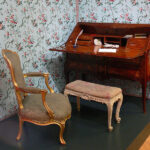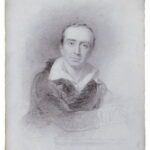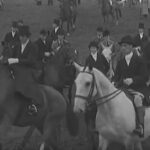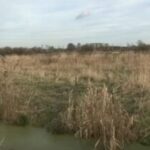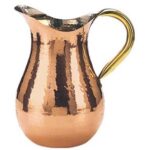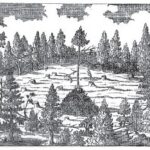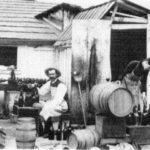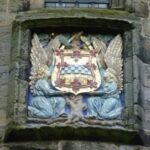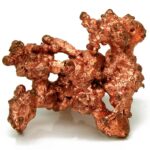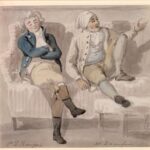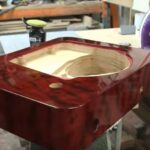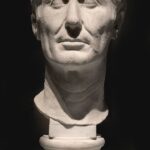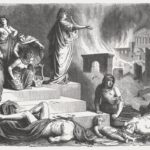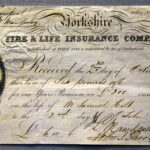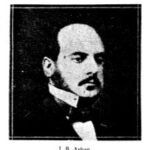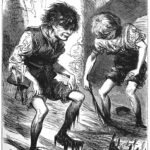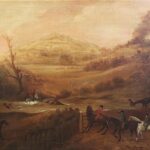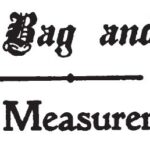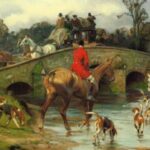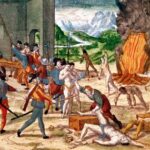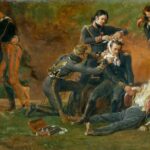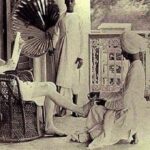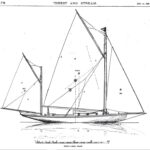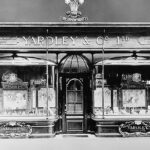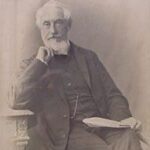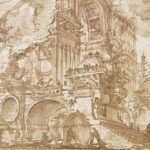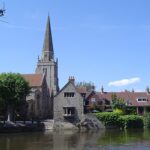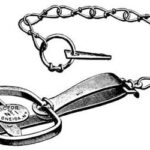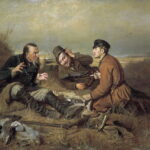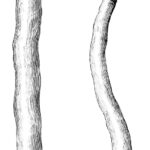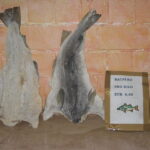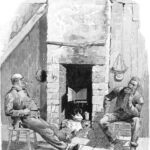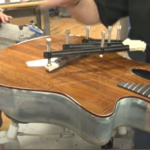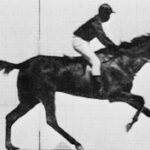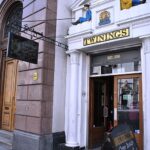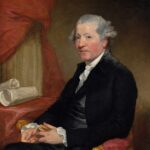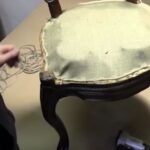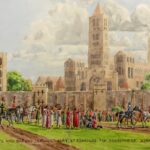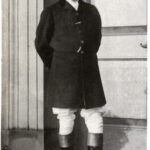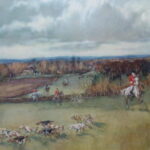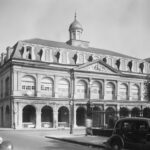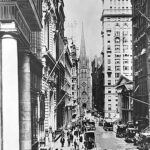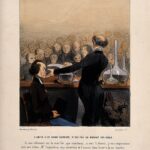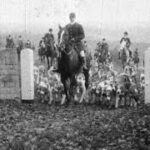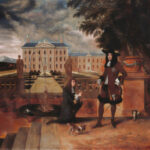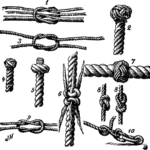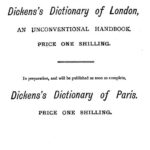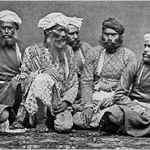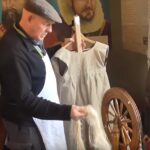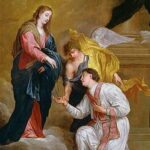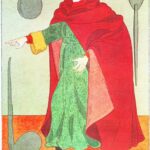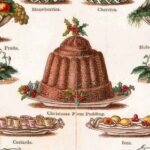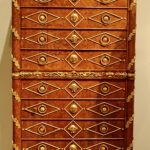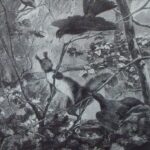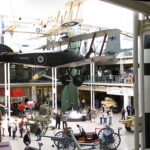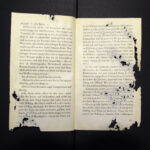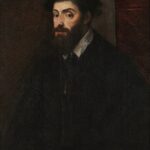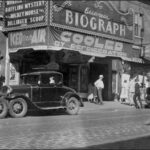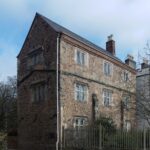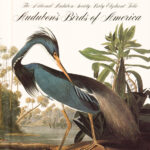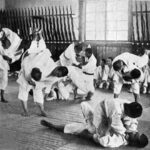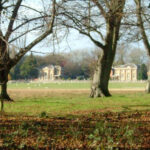Temples, Walls, And Some of the Roman Antiquities of Bath May 22nd, 2021 
A Lecture Delivered at the Guildhall, March 2, 1853 by Rev. H.M. Scarth, M.A., Rector of Bathwick.
To understand the ancient history of the country in which we live, to know something of the arts and manners of the people who have preceded us, to ascertain what we owe to them, and to know what influence their times and their works have had upon our own, can never be an unprofitable study.
But if traces of great works of past ages are still to be found amongst us, and if these works exhibit a great knowledge of art, if they shew the hand of a people highly civilized, they become deeply interesting, and we may derive much benefit from their consideration. The study of them will cast much light upon the records of ancient history which have been handed down to us; they serve to give life and light to that history, and fill its pages with living realities when we see the very stones and remnants of buildings which the hands of the men of whom we read have put together.
How many men travel into distant countries for the sake of investigating the works of art of past times, and to inform themselves of the realities of what they have read and heard at home, and return enlightened, and convinced, and improved by such research. If, then, we have, within our own neighbourhood, and in this our city, ancient historical records, should we not carefully consider them—should we not preserve them with care? and can the time occupied in their study be badly spent,—can it be unprofitably employed? It shall be my endeavour to shew that such a study may be turned to good account, and to the improvement of anyone who shall undertake it in a proper spirit.
Many there are who, on a fine evening, have ascended some of the hills with which Bath is surrounded, and have loved to look down upon the fine city at their feet. They have marked its handsome streets and noble churches; its winding river, with the bridges spanning its breadth, and heard the hum of its active movement, and seen its people passing to and fro, and have observed the beauty of its situation; its hanging terraces; and the green fields and gardens that surround them. Such a sight, on a fine summer’s evening, or on a bright spring morning, has filled many a heart with delight, and led it to ponder upon the rise and origin of this ancient city, and the many generations that have lived and died within its shadow, and all the varied events that have happened within its precincts. It may well be supposed that snch a situation, and a spot endowed with so many natural advantages, was very early made a place of resort; and such we find to have been the case. We have preserved, happily, amongst us, many undoubted records that Bath was very early made a place of resort, and a place of elegant refinement. This city is richer in ancient Roman remains, than, probably, any other in England. Had all the antiquities which have been discovered in the neighbourhood of Bath, as well as in Bath itself, been preserved and brought together, the collection would have surpassed any in this country. It is well known that many have been dispersed and lost, and that much of what has been found in the neighbourhood has been allowed to pass away from the city, instead of being brought to it and carefully kept within it; however, very many of the interesting remains which have been found within the city itself have been, and still are, carefully preserved, and are now to be seen in the Literary Institution. Much has been written upon them by very learned and accurate investigators, and excellent drawings have been made of them; but it is to be feared that the present generation know. less of them, and is less interested in their preservation, than the past. I would, therefore, desire to call especial attention to their value as historical records. I will not trouble you with ancient legends respecting Bath, with stories of Bladud and his pigs, and many marvellous occurrences, which would amuse rather than instruct, but at once go to the most authentic sources of information, and take the subjects best worth comment.
The first rise of Bath is involved in much obscurity, and the period when it was first occupied by the Romans is very doubtful. Camalodunum was the first colony planted by that people in this country, the precise situation of which has been a matter of much dispute. Camden, Gibson, Horsley, and Mr. Reynolds, place it at Malden; Richard, of Cirencester, Dr. Stukely, Bishop Stellinglleet, Baxter, Morant, Dr. Mason, Mr. Gough, Drake, and the Rev. Mr. Leman, place it at Colchester, which, on account of the Roman remains there, seems to have the better claim, as well as in point of situation. It has, however, been also fixed at Camerton, in Somersetshire, near Bath, and the late Mr. Skinner wrote a paper endeavouring to prove this, which is published in Phelp’s History 0f Somerset. There appears to have been more than one place of that name. Camalus, or Camulus, is said to be the ancient Celtic title of Mars, the God of War, and dunum signifies a hill; hence Camalodunum would signify the Hill of Mars, a title, no doubt, given to many spots in this country, which may account for the many opinions expressed about the site of the first Roman colony. This colony was settled A.D. 50, by the Roman General Ostorius, before he led his expedition against the Silures, or inhabitants of South Wales; and for such a purpose Camerton seems better situated than Colchester.
The settlement of the Romans at Camalodunum was afterwards attacked and destroyed in the revolt of the Britons under Queen Boadicea, and it is certain that after that insurrection was quelled, and the Britons again brought under subjection, Bath became a place of note; and it may have been, for a time, the head quarters of the legion which held this portion of the island, and the Governor’s residence may have been fixed here for a certain period. Mr. Skinner observes, “we have good reason for supposing that the Proprietor, Julius Frontinus, who succeeded Suetonius, had established his head quarters at Bath when he carried on his campaign against the Silures, since the military way proceeding to the Trajectus, now called Sea Mills, at the mouth of the Avon, was called Via Julia, after his name.” From this time we may date the rise of the many beautiful edifices which anciently adorned the city, important remains of which have been preserved to the present time. We may date their erection some time toward the end of the first, or beginning of the second century of the Christian era, and they may, therefore, be between 1700 and 1800 years old. We find an inscription on the front of a temple, which commemorates its restoration, after it had fallen into decay, “E Nimia Vestustate,” whence we infer that its first erection could not have been much later than the second century. The form of the letters in the part of the inscription which remains, as well as the skill of the workman who engraved them, would seem to prove that the restoration itself must have taken place a considerable time before the Romans left Britain. The Romans had possession of Bath probably for 400 years, and during that time it was a place of great resort, and much beautified by them. The ancient name was either “Aquæ Solis,” as it is written in the earliest itinerary, that of Antoninus, or ” Aquæ Sulis,” as has been conjectured, from the name of the Goddess who was worshipped here, and believed to preside over the medicinal springs. Most of the altars which have been discovered, of which there are many, are dedicated to the Goddess” Sul-Minerva.” Hence it has been conjectured that the name of the city was ” Aquæ Sulis,” and that” Sul” was an ancient British Goddess, to which the Romans added the name “Minerva;” and as Sul appears to have been the name of the British Goddess of health, the Romans would have designated her by the name of “Minerva Medica.”
This Goddess had one or two temples dedicated to her, one of which stood on the site of the modern Pump Room, and was, probably, like that of Minerva Medica at Rome, circular, and had a portico of Corinthian columns. One of these columns still remains, and is preserved in the hall of the Literary Institution. The workmanship appears to point to the time of the Emperor Titus. The hill called Salisbury, or Little Salisbury, more properly Sulisbury, which overlooks Swainswick and Batheaston, is supposed to have been named by the Ancient Britons after the Goddess” Sul,” and to have been the site of her worship, and that she was the principal object of adoration to all this part of the country; Salisbury Plain being also named from her. An ancient British city also stood on the opposite hill, Hampton Down, where traces are now very visible; but of these cities, and their remains, I must at present defer to speak, directing my remarks to the remains discovered in Bath.
Some writers suppose that the name of Bath was called ” Aquæ Solis,” on account of the hot springs which characterized the city, and by which it was distinguished from ” Wells,” which was called “Aquæ,” on account of the cold springs there. A direct Roman road leads between the two places, which were both anciently Roman towns.
Many fragments of the portico of a temple were discovered on the site of the present Pump Room. “No one,” says Mr. Lysons, “who attentively considers these several fragments, can doubt their having belonged to the same building; and the figures which remain so clearly indicate it to have been a, Temple of Minerva,’ that I have no doubt of its having been the same which is mentioned by the Roman Historian, Solinus (who wrote in the decline of the Roman Empire), when speaking of the hot springs of this island, and the magnificent buildings which had been erected for their reception.” It is curious, to remark the description given by this writer. He says the hot springs were adorned with elegant and costly buildings, and were for general use, “Ad usus Mortalium.”
He tells us that “Minerva” presided over these springs, and that in her Temple “perpetual fires” were kept burning, which were fed with fuel which did not turn to white ashes, but into stony balls, or cinders, when consumed by the fire. Thus, we learn, that this Temple was similar to the Temple of Vesta, at Rome, where a fire was kept buruing continually; but that this fire was fed with coal, as we infer from his peculiar description of the fuel after combustion, that it turned to
cinders, or into “stony balls,” as he terms them. No doubt the fire was fed with mineral coal, which is found about Newton.* The use of coal was then a novelty; in fact, this is the earliest mention we have of the use of coal in this island, which appears to have been, in this case, employed in the service of the Temple, and burnt upon the altar in it. It is curious and instructive to contemplate how, in the lapse of ages, this fuel, which is here mentioned as a curiosity, has become an article of general use, and is one of the greatest sources of wealth to this country. Mr. Wright, in his work entitled The Celt, the Roman, and the Saxon, p. 233, has the following interesting remark on this subject :—” The Romans were more attentive to the utility of the mineral productions of the island than we are accustomed to suppose. There cannot be a doubt that they knew the use of mineral coals, and that they employed them; but they only obtained them where the coal bed was near the surface, and the coal was probably burnt chiefly in the district where it was found. Mineral coal bas been supposed to be referred to by Solinus, when he tells us that Minerva was the patron of the warm springs in Britain, alluding, apparently, to Bath; and that the fire that burnt on her altars did not fall into white ashes, hut, as the fire wasted away, it turned into stony balls.
• Where a very interesting villa was discovered, In 1838, In making the railroad between Bath and Bristol, a notice of which was published by Mr. Goodridge, in the Bath, and Cheltenham Gazette, of June 9th, for that year. The tesslalated pavement there found, is now In the Station, at Keynsham. Of this villa a more detailed account has been published by the Rev. W. L. Nichols, together with a Poem, entitled” Horæ Romanæ,” with accompanying notes.
A more unequivocal proof of the use of this fuel fs furnished by the fact, that cinders of mineral coal bave not unfrequently been found in the fire-places of Roman houses, and villas in different parts of the island. Mr. Bruce assures us that, in nearly all the stations on the line of the wall of Hadrian, ‘the ashes of mineral fuel have been found; in some a store of unconsumed coal has been met with, which, though intended to give warmth to the primeval occupants of the isthmus, has been burnt in the grates Of the modern English. In several places the source whence the mineral was procured can be pointed out.'” It is a remarkable fact, that the “tombstone” of a priest of the Goddess Sul should remain to us. A monumental tablet to a “priest of the Goddess Sul,” erected by his wife, was dug up in Sydney Gardens, and is now in the Literary Institution. He died an old man, at the age of 75. We learn an important fact from this relique, that the Goddess “Sul-Miverva” was not like the Goddess Vesta, at Rome, attended by virgins only, and seen only by . the head virgin, but waited upon by married men. We have also still preserved to us the altar which, in all probability, stood in the centre of this Temple, and contained the pan in which the fire was placed which hurned continually. The shape is different from that of the other altars, and the space at the top sufficient to admit a flat pan. It is of very rude workmanship, and was probably often obliged to be renewed, on account of the fire causing the stone to crack.
“The inscription on the frieze of the portico of the Temple of Sul-Minerva,” says Mr. Lysons, ” does not seem, from the character of the letters, to have been of a date later than the middle of the third century. It relates that Claudius Ligur restored the Temple, which had fallen to decay through extreme age, having dug up a pitcher of money.” If, therefore, the Temple had not been erected as early as is above supposed, it could not, with any propriety, have been mentioned in the inscription as fallen to decay by its great age.
We learn from the Roman Historian, Tacitus, that Agri-cola, who was’ sent into Britain by Vespasian, in order to soften the warlike disposition of the Britons, exhorted them to build temples, courts of justice, and houses, and that, by degrees, they adopted the Roman luxuries of porticoes, baths, and sumptuous banquets (Tac. Agric. 21). This happened during the reign of the Emperor Titus, and “I cannot but think it extremely probable (says Mr. Lysons) that the Temple of Minerva, at Bath, was originally built about that time. The three columns in the Campo Vaccino, at Rome, the capitals of which resemble that found at Bath, in its most remarkable peculiarities, have commonly been referred to the same period.” “Another circumstance, which gives additional weight to this conjecture is, that the colossal head, of Bath
stone, found near the same place, about a century ago, and which may reasonably be supposed to have belonged to a statue erected by the Romans, appears, from the head-dress, to be of as early a date as the reign of Domitian. This head was formerly in the possession of Dr. Musgrave, and is engraved in his ‘Belgium Britannicum.’ The head-dress resembles that of Julia, tlte daughter of Titus, more than of any other Roman Empress.”
Dr. Stukeley, speaking of this antique fragment, says, “I saw the head of the Empress Julia Domna dug up near Bath. The head-dress is like that of her times, and her bust at Wilton. It is the noblest relique of British antiquity, of this sort, which is known. It belonged to a statue of 12 feet proportion, set upon some temple, or pedestal, originally. Mr. Lysons observes, “that the Dr. must have meant Julia, the daughter of Titus, the wife of Domitian, as the head-dress does
not at all resemble that of Julia Domna, the wife of Severus.”
I may here remark, that it is a serious loss to our collection in this city, that a monument so valuable should have been suffered to go out of it. This, I fear, is one of the many instances where historical records of the highest value have found their way into other collections, instead of being preserved, as ‘ they surely ought to have been, in the city. And it is greatly to be feared that such will still be the case until a suitable repository be found for them, and a spirit of interest in their value be revived.
I must now, however, return to the portico of the Temple of Minerva, which is preserved in the vestibule of the Literary Institution, and a drawing of which is beautifully engraved in Mr. Lyson’s elegant illustrations. TheÆgis of Minerva in the centre, appears to us to be coarsely executed, because viewed too near, which would not be the case if seen at its proper elevation. It may, however, be one of those portions of the building repaired, as the inscription on the freize informs us, when fallen to decay by its great age. With respect to the inscription on the freize of the portico, the first part of which remains is the proper name, “Claudius Ligur.” After an hiatus, or space, follows part of a word, “OLEGIO,” which, no doubt, was COLEGIO, and related to one of the Collegia, or Societies of Artificers, established by the Romans in this island, under the direction of one of which this building was repaired.
A funereal monument, discovered in Bath, will throw much light upon this Society.
There is now preserved, in the passage of the Literary Institution, a large slab, with the following inscription engraven in clear letters upon it:—
IVLIVS . VITA Julius. Vitalis
LIS.FABRICIES Fabriciesis
IS.LEG.XX.V.V Leg. XX. V.V
STIPEDIOR Stipendiorum IX
VM.IX.ANNOR.XX Annorum XXIX
lX.NATIONE.BE Natione. Belga.
LGA.EX.COLEGO Ex. Colegio
FABRICE. E LA TV Fabrice. Elatus
S.H.S.E Hic. Situs Est.
It is to the memory of Julius Vitalis, a smith, or armorer, of the twentieth legion, called Valeriana, and Victrix. He was a native of Belgic Britain, and died at the age of 29, having served nine years, and was buried by the Company ofSmiths. The legions had their particular” fabri,” or smiths, who were employed in preparing arms and military instruments for the soldiery; and, besides these, there were others in their towns. Their workhouse was called Fabrica, and the “Collegium Fabricœ,” or “Fabricensium,” was the company, or body of artificers.
Bath was in the country of the Belgre, and Julius Vatalis appears to have been a native in this employment. This stone remained, for many years, in the wall at the east end of the Abbey Church. It was originally discovered October, 1708, by the side of the London road, Walcot, with two urns -the one large, the other small—containing ashes. None of the inscriptions preserved have engaged so much attention as this. Dr. Horsley has a long commentary on it.
From this stone, we learn that there was a College of Smiths, or Armourers, in this city; and it was by one of these that the Temple situated formerly on the western half of the Pump Room was rebuilt or restored. Let us see, now, how this restoration was accomplished. It seems that it was through the discovery of a pitcher of coins by Claudius Ligur, who devoted what he had dug up to this purpose,—a holy purpose, no doubt, in the mind of the pious Briton, who could not bear to see the Temple of that Goddess, from whom he believed the healing springs of Bath to derive all their virtue, to go to ruins; but when he had accidentally found the means, devoted them to this object. Happy would it be for Christians, if they who have a TRUE GOD to worship, not a fabulous deity, would devote a portion of what they may receive by apparent accident, but really by the working of divine providence, to the honour and glory of God, and the good of their fellow men!
But this is not the only instance of the piety and devotion of the Romanized Briton, or the Roman himself. We have several votive altars, erected as thank offerings for the benefit derived from the use of the Bath waters, shewing their great efficacy even at that time. Before, however, going to the altars placed in the Temples, we must endeavour to do justice to the Temples themselves.
On each side of the Ægis of Minerva, there appears to have been a figure of winged Victory bestriding the globe. On one side the figure of the globe remains, and the foot of Victory upon it. On the other side a portion of the wing remains. This was a favourite subject with the Romans. There is a very perfect figure of this emblem engraved in “Bruce’s Roman Wall,” from a stone discovered along the line of the Vallum of Hadrian, which extended between Newcastle and Carlisle. Below the gorgon’s head, on the front of the temple, and just without the circuit of oak leaves and acorns which compasses the shield, is the figure of an owl, which a hand holds by the wing. This was an invariable emblem attached to the Temple of Minerva; the owl being the peculiar token of that deity. The winged figure of Victory appears to have supported the Ægis. There is also a helmet in the lower portion, which is appropriate to the Goddess in her character of Pallas. The form of the Temple seems to have been similar to that of “Minerva Medica,” at Rome, a rotunda, having—as appears from the remains still existing—a portico in front.
In order that we may understand the figure of this Temple, we must consider the form of that which remains still at Rome. “In the Pantheon,” says Mr. Whitaker, in his review of Warner’s History of Bath, “the only one of the round temples remaining at present, are seven niches, or chapels, the entrance into everyone of which is ornamented by two pilastres, Corinthian and fluted. Opposite the entrance gate is the niche for the great altar, as in the other parts of the circle, to the right and left, are niches for the other altars. The central niche was reserved for Jupiter, as the side niches were for Mars, Venus, Julius Cresar, and other deities. In the same manner, we believe, was the temple at Bath disposed within, only what were statues at Rome, shrunk up into mere altars at Bath. In the common niches were lodged the altars of Jupiter Cetius, Mars, and Nemetona, three deities honoured by one altar only. The altars to Jove and Hercules, honoured together upon one; and to Sulinis, in the greatest niche of all.” On some future occasion we may hope to consider these altars and the inscriptions on them. We will now proceed to the statue of the Goddess, which is supposed to have been placed in this Temple. We have, in the library of the Literary Institution, a splendid bronze head, which has formerly been gilded, the traces of the gold still remaining. This is one of the most interesting and valuable of the Roman remains which have been discovered in this country. It belongs to the Corporation, as do also all the Roman remains deposited in the Literary and Scientific Institution. This relique was dug up the month of July, 1727, in Stall street, near the corner of Bell Tree lane, where it lay buried sixteen feet under the surface of the ground. It appears to have been cast in a mould: the form of it is very fine, and the features truly Minerva’s. “This Military Goddess,” says Mr. Whitaker, “has been expected, by some, to be like Venus, the mere Goddess of Smiles and Loves. She is a Goddess very different, having a helmet on her head, wielding a javelin in her hand, even carrying a gorgon’s head upon her breast-plate, and thus mixing in the fight with men. So acting, she must, of necessity, shew a manliness and muscularity in the face.” With this head were found, at the same time, several Roman coins, which were preserved, when
Mr. Horsley visited Bath, 1730, in a box in the Town Hall. Unhappily, the box and the coins are now no longer forthcoming. They were of Marcus Aurelius, Maximinus, Maximilian, Dioclesian, Constantine, and other Emperors. Aurelius appears to have been the earliest Emperor acknowledged in these coins; and Whitaker, therefore, supposes the erection of the statue to date sometime between the years A. D. 163 and 181.
I must now pass to the remains of another temple, which stood not far from the one just described, but which are of smaller dimensions. These remains are also in the Literary Institution, and placed opposite to the pediment of Minerva’s Temple, which has the gorgon’s head. In excavating the ground for the foundation of the present Pump Room, in 1790, there was found an oblong stone, with an inscription on it, which, by filling up the letters wanting in the fragment, may be read,
C. PROTACIVS
DEAE. SVJ.S. MINERVÆ.
” Caius Protacius restored the Temple of the Goddess Sul-Minerva;” or, it may be, was Priest, as either form of expression, ÆDEM RESTITVIT, or 8ACERDOS, must be supplied. Many other fragments were found at the same time, which did not appear to belong to the Great Temple, but to some smaller edifice which stood near it. Out of these fragments Mr. Lysons has composed the principal front of a small temple, and he places the inscription over the door.
The fragments which remain consist of the face and head of a figure, encircled in a crescent, having beside it a wand, round which is a serpent; the lower portion is covered with drapery. The remains of four cupids, or genii, representing the four seasons of the year, were also found, together with pilasters, fluted and cabled. All these are beautifully engraved by Mr. Lys0ns. He says, “the figures of genii, in bas relief, within shallow niches, unquestionably represent the ‘four seasons of the year.”’ Spring has flowers in his right hand; Summer has an ear of corn. These two are naked, and have a loose cloak fastened to their shoulders. Of the figure representing Autumn, little more than the right hand and arm still remain, holding a bunch of grapes. This figure is winged. Of the figure of Winter, nothing remains but the right hand, arm, and shoulder, and the wing attached to the latter. He holds a bill-hook, and appears to have been clothed. The seasons, with similar attributes, are to be seen on the arch of 8everus, at Rome. It may be that the device here was imitated by some humble hand in Britain. If this be so, it would help us towards fixing the date of this temple, prior to A. D. 193.
Here we have preserved to our times the remnants of two temples, monuments of heathen idolatry-records of what once prevailed in this land I They carry our minds back to ages when this country was under the dominion of Pagan superstition, and when men were bowing down to worship false gods or devils. The contemplation of such records, which have, doubtless, for some wise purpose been preserved to our times, should make us thankful for the privileges which we enjoy as a Christian people, and remind us how much we owe to the mercy of God in calling us out of darkness, and giving us the clear light of revelation. It is a curious fact, and well worthy of remembrance, that the wife of Aulus Plautius, one of the Generals of Claudius, who conquered a portion of this island, about the years 45 and 46 after Christ, is mentioned as the first Christian. Tacitus describes her as professing a foreign superstition, but as an excellent and exemplary lady: and we cannot forget that to the Roman invasion of this island, we probably owe the blessing of the first propagation of Christian truth.
Camden has the following observations respecting this subject :—” The yoke of the Romans, although it were grievous to the Britains, yet comfortable it proved, and a saving health unto them, for the healthsome light of Jesus Christ shone withal upon the Britains, and the brightness of that most glorious empire chased away all savage barbarism from the Britains’ minds, like as from other nations which it had subdued; for to say nothing of the rest of the provinces, the Romans having brought over colonies hither, and reduced the natural inhabitants of the island unto the society of civil life, by training them up in the liberal arts, and by sending them into Gaul for to learn perfectly the laws of the Romans, governed them with their laws, and framed them to good manners and behaviour.” Page 83.
Thus, if the Britons were sometimes cruelly oppressed—as we know they were—and had to endure the exactions not only of the Military Governor, but of the civil officers as well, s0 that they very justly complained of suffering both in their persons and their goods; yet did they derive greater advantages from their Roman masters, who were the first to pave the way for that civilization which we, by the blessing of God, now enjoy, and to kindle the light of Christian truth in the land.
It will be right to say a word now about the site of these temples, and the position of the Roman town of ” Aquæ Solis.”
The remains of these temples were discovered, as I before stated, on the site of the present Pump Room, towards the western half of it. Stall street appears to be the most ancient part of the town; and the Roman houses appear to have run along the course of the Roman road, which, entering the city from Walcot and Batheaston, passed along to Stall street, and on to the river crossing it somewhere near the present bridge at the bottom of Southgate street, and continued on up Holloway. The principal houses and buildings appear to have been near Stall street. The building which has commonly been considered as the ancient Roman Baths, but which has also been, by Mr. Whitaker,* conjectured to have been the Pretorium, or residence of the Roman Commandant, was a little to one side of it, on the west, i. e., on the site of the old Abbey house and garden, where now stand the Kingston Baths, and the Office of the Board of Guardians.
Before we pass to the consideration of this very interesting remain, it may be well to say a few words respecting Stulrs Church, the situation of which seems to have been very near the site of the Temple of Minerva. In fact, antiquarians have considered that there was evidence of the fact of Stall’s Church being only the temple adapted to Christian uses.
• See Anti-JIIC., vol. x., p. 116. October, 1801.
The remains of the temple were, however, found under the northern half of the Pump Room, and Stall’s Church stood at the other end of the portico, nearer to the angle formed by Cheap street and Stall street. The grounds for supposing that the temple continued until very late, and was adapted to the purposes of a Christian Church, are the following:—There is a curious document still extant, a MS. in vellum, belonging to the Marquis of Bath, which appears to have
been written at various times, the oldest writing being of the 14th century. This is the old leger book of the Bath Abbey. carried off in the pillage of the monastery at the Reformation. The book records an epitaph, inscribed on the right hand, “In ostio ruinosi Templi, quondam, Minervæ dedicati et adhuc in loco dicto, sese studiosis offerens,” 1582,7° Decemb. in civit. Bathon. “The Temple of Minerva,” says Whitaker ( Anti-Jacooin Review, vol. x., p. 35), “is thus recorded to have continied, though in a ruinous state, as late as A. D. 1582, to have been known as the Temple formerly dedicated to Minerva, to have had its portal still kept up, and to have had a long epitaph still inscribed upon the right side of it.” In the oldest map which we have of Bath, dated A. D. 1572, ten years before the above record was written, “Staules Church” is noted at the northern end of “Staules street,” at the angle between that and Cheap street, having an open churchyard, which extends to the King’s Bath. The crypt, or under croft, of Stall’s Church, still remains, and is now converted into a wine store, in the occupation of Messrs. Arnold. Below the crypt is a further opening, which seems to have been a vault for the purpose of interment. The masonry is excellent, but it is difficult to infer the date of it. Stall’s Church (as Mr. Warner observes) was one of the most ancient religious edifices in the city of Bath, and continued a rectory till A. D. 1263, under the title of “St. Mary de Stall,” when it was appropriated to the monks of Bath. The name of ” Stall’s Church” is most probably derived from its dedication to St. Mary de Stall, i. e., the Virgin at the Manger, not, as Mr. Whitaker supposes, from the niches or stalls in the temple; and the street took its name from the Church. Before leaving the subject of the Temple of Minerva, I must mention an altar, or cippus, which is now in the passage of the Literary Institution, and which was discovered at the lower end of Stall street, A. D. 1783. The inscription is curious, as it mentions the restoration by Caius Severus, a centurion, who had either the additional name of ” Emeritus,” or was “discharged” from his legion; of some place which had been consecrated to religious purposes, but which had fallen to decay. This decay had been produced “per insolentiam,” which may mean “disuse;” but the word “erutum,” “overthrown,” follows in the inscription, which leads us to believe the decay to have been accomplished rather by “violence” than “disuse,” and hence “insolentiam” may relate to some outbreak of pious zeal on the part of the Christian inhabitants of Bath against the idolatry of their neighbours. If this is the case, as Mr. Whitaker supposes, we have a curious monument of the contests between Christianity and paganism during the early period of the Christian dispensation.
It would take too long to dwell upon the many altars which have been found, and their inscriptions. These often express the gratitude of Romans who had been restored to health-it may be by the use of the waters-and who erected their votive altars in grateful remembrance of the benefit conferred: an example to be imitated by every Christian who has higher motives, and more worthy objects on which to bestow his bounty. Our Hospitals and charities are, however, noble monuments of Christian piety, far surpassing any which heathen antiquity can boast, and which Christian gratitudeshould support with all that bountiful liberality that their excellence deserves.
The Old Roman Baths, as they are generally called, or as they are conjectured, by Mr. Whitaker, to have been the palace of the Roman Commander, have been already mentioned. The site is now partly occupied by the building forming the Union Office, and partly by the Kingston Baths. Under the Kingston Baths, the remains of the Roman building is still to be seen, but is at present, I much regret to say, for certain reasons, inaccessible. A plan of these buildings has been published by Mr. Warner, in his History of Bath, and in The History of Somersetshire, and in other works, as Gough’s Camden. It has been well described in Colinson’s History of Somersetshire, and copied from him into other writers. In this building the ancient floors, walls, flues, and furnaces were distinctly visible. It is to be hoped that what still remains of it may, some day, be brought to light, and the remnant of this once spacious and noble edifice carefully preserved.
We ought now to mention the walls of the Roman city. The ancient city walls, which Leland has described as existing in his time (the reign of Henry VIII.), and a few traces of which still remain, are supposed to have been built upon the foundation of the old Roman walls. Governor Pownall has informed us of what he had an opportunity of examining in his time. He says that “Some houses were building in January, 1795, on the site of the Borough walls, opposite the Hospital. The workman, digging out a space on the inward side of these walls, to make an area, after they had dug down ten or eleven feet, and laid bare the masonry of the foundation of the Borough walls, came to the foundation of the old Roman walls, on which they were set. I went down” says he, “this excavation, and examined the different construction of them (i. e., the Borough walls), and of the Roman foundations. The old construction, upon which the more modern walls were set, is of a compact consistency, harder than any stone of this country; the workmen could not break it without sledge-hammers and wedges. The breadth which I measured is 15 feet; it is set off wider below, but to what breadth or depth that may go, I had not the means of examining.” Upon comparing his own examination with that of a builder, who had opened the ground down to these Roman foundations in another place, at the N. W. corner of the the town, the Governor says, “I venture to state the construction of these foundations are of that sort which Vitruvius calls” diamicton.” The front faces, or outer’ coats of the wall, were constructed of large blocks of hard grit stone, of various thickness. When I was told that some of them were supposed to be of two tons weight, I observed that they were placed at the corner, or angle of the wall, where more strength was required. The interior of this wall, formed thus into a kind of caisson, was filled up with rubbish, stone, and liquid lime, or cement, which, in time, hardened into the rocky consistency which this part is found to be of. The workmen could easily separate and take away the outward face, which they did, and used in their works; but the breaking up of the cemented rocky part was a work of too much labour and expense to be of practicable use. I enquired if there were any cross binding courses. The answer was, No; but that the unequal thickness of the facing stones, running into the interior part, operated as clamps.”
In the Borough walls standing upon this Roman work, were anciently built in several very curious reliques of Roman sculpture, which were seen by Leland, and are described by him in his Itinerary. I cannot draw this lecture to a close without giving the account in his own words:—
“There be divers notable antiquities engraved in stone (says he) that yet be sene yn the walles of Bathe, betwixt the South gate and the Weste gate: and agayn betwixt the Weste gate and the North gate. The first was an antique head of a man, made al fiat, and having great lokkes of here, as I have in a coin of C. Antius. The secunde that I did see bytwene the South and the North gate was an image, as I took it, of Hercules!* for he held in each hand a serpent. Then I saw the image of a foote man, ‘Vibrato gladio’ et ” prætenso clypeo.’ Then I saw a braunch with leves foldid and wrethin with circles.
• Mentioned, also, by Camden.
Then I saw two nakid imagis lying along, the one embracing the other. Then I saw two antique heddes with heere as rofelid yu lokkes. Then I saw a grey-hound as running, and at the taile of hym was a stone engravin with great Roman letters, but I could pike no sentence out of it. Then I saw another inscription, but the weather hath, except a few letters, clere defacid. Then I saw, toward the West gate, an image of a man embracid with 2 serpentes. I took it for Laocoon.* Betwixt the West and North gate I saw 2 inscriptions, of which sum wordes were evident to the reader, the residue clene defacid. Then I saw the image of a nakid man. Then I saw a stone having cupidines et labruscas intercurrentes. Then I saw a table, having at eche end an image, vivid and flourished above and beneth. In this table was an inscription of a tum be, or burial, wherin I saw playnly these words: ‘Vixit annos xxx.’ This inscription was metely hole, but very diffusely written, as letters for hole wordes, and 2 or 3 letters conveyed in one. Then I saw 2 images, whereof one was of a nakid manne, grasping a serpent in eche hand, as I took it; and this image was not far from the North gate. Such antiquities as were in the waulles, from the North gate to the Est, and from the Est gate to the South, hath bene defacid by the building of
the monastry, and making new waulles. I much doubte (sa’ys Leland) wither these antique workes were set in the tyme of the Romans’ dominion in Britayne in the waulles of Bath as they now stand, or wither they were gatherid of old ruines ther, and sins set up in the waulles re-edified in testimony of the antiquitie of the town.” Doubtless the latter, as we have seen by the different construction of the more modern walls to that of the ancient Roman work. It is greatly to be regretted that these interesting reliques of Roman art are now entirely lost—not a stone remains; whatever we now possess has been found since Leland wrote; and had not a taste for preserving the remains of antiquity been kindled amongst us, these must have shared the same fate.
• Camden calls it a figure of Hereules, Ophiuchus, or Esculapius.
Yet how valuable do the few records which remain become to us as monuments of past history, and memorials of ancient art! Should we not preserve them with great reverence? It is earnestly to be hoped, that whatever changes may come over our city, there will never be wanting the spirit of love for antiquity, which leads the citizens to care for their monuments—monuments which attest that this city is not of yesterday, but that it had its rank among the civilized nations of the earth near 1800 years ago; and that the arts were then cultivated, and the refinements of life were then valued; and the foundation was early laid for that prosperity which has shone out so conspicuously in modern times.
Dr. Horsley, in the preface to his Britania Romana, has the following observations on the Sculptures of Bath. They appear in former times to have met with very sad treatment, and to have been little esteemed-this shews the great need of a local Museum. He says, “Some of the Sculptures at Bath, which are entirely defaced, I have chosen rather to omit than give them either from others’ imaginations or my own. . . . . . The funeral bust goes by the name of Lady Mog, and has been severely battered with stones by the children. Besides those which are engraven, there was also another human figure, which seemed to hold somewhat in its hand too large for a corona, and more like a hoop.”
” I remember,” says Mr. Addison, “to have seen an antique statue of Time, at Rome, with a wheel, or a hoop of marble, in his hand.”
As far as I can ascertain, both Lady Mog, and the other figure, have entirely perished; and we are left to conjecture what these interesting reliques of ancient art were. We hope that no more Roman remains will ever again share the fate of Lady Mog, and be left as a mark for mischievous children!
While the Literary Institution is indebted to the Corporation for increasing its interest and embellishment, by depositing there so many valuable and interesting reliques of Roman history, the Corporation are no less indebted to the Institu-tion for the care that has been taken of these remains, and for the method and order with which they have been arranged. They are open to the public for inspection, at all reasonable hours, without any charge; and it is much to be wished that an enlightened public would avail themselves of the opportunities afforded them of access to these monuments.
From the observations of Dr. Horsley, we may form some idea of the’ruthlessness with which many valuable monuments have been destroyed. No care has been taken to collect and arrange the coins which have been found in and around Bath, of which there are a great many. There are, indeed, some in the collection at the Literary Institution, but more are in private hands; many have been lost (as we have noticed of the box which Dr. Horsley mentions having examined a century ago, and which was then in the Town Hall), and more have been carried away from Bath. If, however, those which still remain in private hands could be brought together and arranged, much light might be thrown upon history.
Of the valuable memorials now no longer existing, I may mention the following, which, though mentioned by writers on antiquities, have now disappeared :—A sepulchral altar to SVCCIA PETRONIA, that of C. MVRRIVS, that of M. V ALERIVS, and that of a Gloucestershire Octogenarian; all described by Dr. Horsley. Where is that dug up at the Bell, in Walcot, inscribed VIBIA IVCVNDA AN XXX. H. S. E., which was in the possession of Alderman John Parker, a century or more ago; who had also the Red Book of Bath, a curious historical document, which has likewise passed away from the city?
A bronze sword was found, four or five years ago, at the Gasometer. It is now in the collection of the Duke of Northumberland. Surely such a relique as this ought to have been in our local Museum! I have mentioned the head which was sent to Dr. Musgrave, as among the lost reliques. What has become of the medicine stamp found in Bath in 1781? This was a curiosity well worthy preservation: it betokened that even then Bath was not without celebrity for that high medical skill which it still retains. But it is now nowhere to be found; and so, it is to be feared, have fared other curiosities. The published catalogue of the Somersetshire Archæological and Natural History Society, for 185I, specifies a bronze head of Diana, dug up in Bath a century ago; and a bronze cupid. The former may be only a copy of our splendid specimen here. A very handsome statue, in marble, of Minerva, said to have been dug up in Bath, is now in the possession of Messrs. Rainey. It ought not to pass out of the city, if its authenticity can be established.
Thus, there is no doubt, that many very interesting monuments of art have been carried out of the town, for want of a fund to purchase what has been discovered which was rare and valuable. The remains of antiquity, in their present position, are hardly set off to that advantage which they deserve, and which can create that interest which they merit. They require more space, and more light, and somewhat more of convenience for the inspection of them. This might easily be effected at a moderate outlay; and if spirited inhabitants could be found to contribute their share towards increased space, and a re-arrangement, we might, eventually, place our collection on a par with others which have less title to notice.
If this account of but a portion of the interesting remains of Roman antiquity found in this city, should have kindled in any a desire to search out their value, or awakened an interest in the history of former ages,—if it shall have led any to value more this city and its advantages, and to take delight in its resources, and taught them how to employ, profitably, a leisure moment,—above all, if it shall have led them to contrast their own favoured condition with that of the men of past ages, who lived in ignorance of the great truths of divine revelation, it will not be a wasted hour which has been spent upon the Roman Antiquities of Bath.
Printed by R. E. PEACH (Pocock’s Library), Bridge Street, Bath.
Click here to read more about the author, Rev. H.M. Scarth, M.A., Rector of Bathwick
Home
Top of Pg.
|
Half a league, half a league, Half a league onward, All in the valley of Death Rode the six hundred. “Forward, the Light Brigade! Charge for the guns!” he said. Into the valley of Death Rode the six hundred. Home Top of [...] Read more →
Home Top of Pg. Read more →
The Diamond Empire Home Top of [...] Read more →
Reprint from The Sportsman’s Cabinet and Town and Country Magazine, Vol I. Dec. 1832, Pg. 94-95 To the Editor of the Cabinet. SIR, Possessing that anxious feeling so common among shooters on the near approach of the 12th of August, I honestly confess I was not able [...] Read more →
THE answer to the question, What is fortune has never been, and probably never will be, satisfactorily made. What may be a fortune for one bears but small proportion to the colossal possessions of another. The scores or hundreds of thousands admired and envied as a fortune in most of our communities [...] Read more →
Home Top of Pg. Read more →
Home Top of Pg. Read more →
Donate to the YouTube site owner Gabe and he might send you some chocolate…. Home Top of Pg. Read more →
King Arthur, Legends, Myths & Maidens is a massive book of Arthurian legends. This limited edition paperback was just released on Barnes and Noble at a price of $139.00. Although is may seem a bit on the high side, it may prove to be well worth its price as there are only [...] Read more →
Chen Lin, Water fowl, in Cahill, James. Ge jiang shan se (Hills Beyond a River: Chinese Painting of the Yuan Dynasty, 1279-1368, Taiwan edition). Taipei: Shitou chubanshe fen youxian gongsi, 1994. pl. 4:13, p. 180. Collection of the National Palace Museum, Taipei. scroll, light colors on paper, 35.7 x 47.5 cm Read more →
Click here to access the Internet Archive of old Popular Mechanics Magazines – 1902-2016 Click here to view old Popular Mechanics Magazine Covers Home Top of Pg. Read more →
Officers and men of the 13th Light Dragoons, British Army, Crimea. Rostrum photograph of photographer’s original print, uncropped and without color correction. Survivors of the Charge. Half a league, half a league, Half a league onward, All in the valley of Death Rode the six hundred. “Forward, the Light Brigade! Charge for the [...] Read more →
Early Texas photo of Tarpon catch – Not necessarily the one mentioned below… July 2, 1898. Forest and Stream Pg.10 Texas Tarpon. Tarpon, Texas.—Mr. W. B. Leach, of Palestine, Texas, caught at Aransas Pass Islet, on June 14, the largest tarpon on record here taken with rod and reel. The [...] Read more →
From Fores’s Sporting Notes and Sketches, A Quarterly Magazine Descriptive of British, Indian, Colonial, and Foreign Sport with Thirty Two Full Page Illustrations Volume 10 1893, London; Mssrs. Fores Piccadilly W. 1893, All Rights Reserved. GLIMPSES OF THE CHASE, Ireland a Hundred Years Ago. By ‘Triviator.’ FOX-HUNTING has, like Racing, [...] Read more →
Full Cover, rear, spine, and front Published by Piranesi Press in collaboration with Country House Essays, this beautiful paperback version of the King James Bible is now available for $79.95 at Barnes and Noble.com This is a limited Edition of 500 copies Worldwide. Click here to view other classic books [...] Read more →
The Ardabil Carpet – Made in the town of Ardabil in north-west Iran, the burial place of Shaykh Safi al-Din Ardabili, who died in 1334. The Shaykh was a Sufi leader, ancestor of Shah Ismail, founder of the Safavid dynasty (1501-1722). While the exact origins of the carpet are unclear, it’s believed to have [...] Read more →
Book Conservators, Mitchell Building, State Library of New South Wales, 29.10.1943, Pix Magazine The following is taken verbatim from a document that appeared several years ago in the Maine State Archives. It seems to have been removed from their website. I happened to have made a physical copy of it at the [...] Read more →
H.F. Leonard was an instructor in wrestling at the New York Athletic Club. Katsukum Higashi was an instructor in Jujitsu. “I say with emphasis and without qualification that I have been unable to find anything in jujitsu which is not known to Western wrestling. So far as I can see, [...] Read more →
Home Top of Pg. Read more →
Sennen Cove at Dusk – photo by Jim Champion – 2005 Home Top of Pg. Read more →
Home Top of Pg. Read more →
http://www.vermeerscamera.co.uk/home.htm Home Top of Pg. Read more →
The following highly collectible Franklin Library Signed Editions were published between 1977 and 1982. They are all fully leather bound with beautiful covers and contain gorgeous and rich silk moire endpapers. Signatures are protected by unattached tissue inserts. The values listed are average prices that were sought by [...] Read more →
Robert W. Service (b.1874, d.1958) There are strange things done in the midnight sun By the men who moil for gold; The Arctic trails have their secret tales That would make your blood run cold; The Northern Lights have seen queer sights, But the queerest they ever did see Was that night [...] Read more →
Modern slow cookers come in all sizes and colors with various bells and whistles, including timers and shut off mechanisms. They also come with a serious design flaw, that being the lack of a proper domed lid. The first photo below depict a popular model Crock-Pot® sold far and wide [...] Read more →
Royal Exchange and The Bank of England From How to Make Money; and How to Keep it, Or, Capital and Labor based on the works of Thomas A. Davies Revised & Rewritten with Additions by Henry A. Ford A.M. – 1884 CHAPTER XXVI BANKING AND INSURANCE. I [...] Read more →
Foie gras with Sauternes, Photo by Laurent Espitallier As an Appetizer Pale dry Sherry, with or without bitters, chilled or not. Plain or mixed Vermouth, with or without bitters. A dry cocktail. With Oysters, Clams or Caviar A dry flinty wine such as Chablis, Moselle, Champagne. Home Top of [...] Read more →
Click here to read The First Greek Book by John Williams White The First Greek Book - 15.7MB IN MEMORIAM JOHN WILLIAMS WHITE The death, on May 9, of John Williams White, professor of Greek in Harvard University, touches a large number of classical [...] Read more →
John Atkinson Grimshaw – Glasgow Saturday Night Home Top of Pg. Read more →
The magician delighted in exposing spiritualists as con men and frauds. By EDMUND WILSON June 24, 1925 Houdini is a short strong stocky man with small feet and a very large head. Seen from the stage, his figure, with its short legs and its pugilist’s proportions, is less impressive than at close [...] Read more →
Chipping a Turpentine Tree DISTILLING TURPENTINE One of the Most Important Industries of the State of Georgia Injuring the Magnificent Trees Spirits, Resin, Tar, Pitch, and Crude Turpentine all from the Long Leaved Pine – “Naval Stores” So Called. Dublin, Ga., May 8. – One of the most important industries [...] Read more →
CLAIRVOYANCE by C. W. Leadbeater Adyar, Madras, India: Theosophical Pub. House [1899] CHAPTER IX – METHODS OF DEVELOPMENT When a men becomes convinced of the reality of the valuable power of clairvoyance, his first question usually is, “How can [...] Read more →
NEWSPAPER.-Printed sheets published at stated intervals, chiefly for the purpose of conveying intelligence on current events. The Romans wrote out an account of the most memorable occurrences of the day, which were sent to public officials. They were entitled Acta Durna, and read substantially like the local column of a [...] Read more →
New York Stock Exchange Floor September 26,1963 The Specialist as a member of a stock exchange has two functions.’ He must execute orders which other members of an exchange may leave with him when the current market price is away from the price of the orders. By executing these orders on behalf [...] Read more →
Home Top of Pg. Read more →
Looking to spice up your dinner? Let’s hop along and cook some roo. Home Top of Pg. Read more →
Cleaner for Gilt Frames. Calcium hypochlorite…………..7 oz. Sodium bicarbonate……………7 oz. Sodium chloride………………. 2 oz. Distilled water…………………12 oz. Home Top of Pg. Read more →
Sept. 3, 1898. Forest and Stream Pg. 188-189 How to Distinguish Fishes. BY FRED MATHER. The average angler knows by sight all the fish which he captures, but ask him to describe one and he is puzzled, and will get off on the color of the fish, which is [...] Read more →
Home Top of Pg. Read more →
A terrestial globe on which the tracts and discoveries are laid down from the accurate observations made by Capts Cook, Furneux, Phipps, published 1782 / globe by John Newton ; cartography by William Palmer, held by the State Library of New South Wales The British Library, using sophisticated filming equipment and software, [...] Read more →
EIGHTEEN GALLONS is here give as a STANDARD for all the following Recipes, it being the most convenient size cask to Families. See A General Process for Making Wine If, however, only half the quantity of Wine is to be made, it is but to divide the portions of [...] Read more →
Testing the Irish Blue Terrier Breed in 1923. Home Top of Pg. Read more →
THE sense of a consecutive tradition has so completely faded out of English art that it has become difficult to realise the meaning of tradition, or the possibility of its ever again reviving; and this state of things is not improved by the fact that it is due to uncertainty of purpose, [...] Read more →
Home Top of Pg. Read more →
Home Top of Pg. Read more →
Click here to view more great Italian recipes. Home Top of Pg. Read more →
Roger Scruton – Why Beauty Matters (2009) from Mirza Akdeniz on Vimeo. Click here for another site on which to view this video. Sadly, Sir Roger Scruton passed away a few days ago—January 12th, 2020. Heaven has gained a great philosopher. Home Top of [...] Read more →
As reported in the The Colac Herald on Friday July 17, 1903 Pg. 8 under Art Appreciation as a reprint from the Westminster Gazette ART APPRECIATION IN THE COMMONS. The appreciation of art as well as of history which is entertained by the average member of the [...] Read more →
Gate of Honour, Caius Court, Gonville & Caius Gonville & Caius College, known as Caius and pronounced keys was founded in 1348 by Edmund Gonville, the Rector of Terrington St Clement in Norfolk. The first name was thus Goville Hall and it was dedicated to the Annunciation of the Blessed Virgin Mary. [...] Read more →
PAINTER-WORK, in the building trade. When work is painted one or both of two distinct ends is achieved, namely the preservation and the coloration of the material painted. The compounds used for painting—taking the word as meaning a thin protective or decorative coat—are very numerous, including oil-paint of many kinds, distemper, whitewash, [...] Read more →
Dec. 24, 1898 Forest and Stream Pg. 513-514 The Standard Navy Boats. Above we find, The accompanying illustrations show further details of the standard navy boats, the lines of which appeared last week. In all of these boats, as stated previously, the quality of speed has been given [...] Read more →
THE FIRST step in producing a satisfactory crop of tobacco is to use good seed that is true to type. The grower often can save his own seed to advantage, if he wants to. Before topping is done, he should go over the tobacco field carefully to pick [...] Read more →
Home Top of Pg. Read more →
Dominion, Royal St. Lawrence Yacht Club,Winner of Seawanhaka Cup, 1898. The Tail Wags the Dog. The following is a characteristic sample of those broad and liberal views on yachting which are the pride of the Boston Herald. Speaking of the coming races for the Seawanhaka international challenge cup, it says: [...] Read more →
The greatest cause of failure in vinegar making is carelessness on the part of the operator. Intelligent separation should be made of the process into its various steps from the beginning to end. PRESSING THE JUICE The apples should be clean and ripe. If not clean, undesirable fermentations [...] Read more →
Richard Barker KJ Title Pg. Robert Barker was the printer of the first edition of the King James Bible in 1611. He was the printer to King James I and son of Christopher Barker, printer to Queen Victoria I. Home Top of Pg. Read more →
Buying a book for a serious collector with refined tastes can be a daunting task. However, there is one company that publishes some of the finest reproduction books in the world, books that most collectors wouldn’t mind having in their collection no matter their general preference or specialty. Read more →
Snipe shooting-Epistle on snipe shooting, from Ned Copper Cap, Esq., to George Trigger-George Trigger’s reply to Ned Copper Cap-Black partridge. —— “Si sine amore jocisque Nil est jucundum, vivas in &more jooisque.” -Horace. “If nothing appears to you delightful without love and sports, then live in sporta and [...] Read more →
WIPO HQ Geneva UNITED STATES PLANT VARIETY PROTECTION ACT TITLE I – PLANT VARIETY PROTECTION OFFICE Chapter Section 1. Organization and Publications . 1 2. Legal Provisions as to the Plant Variety Protection Office . 21 3. Plant Variety Protection Fees . 31 CHAPTER 1.-ORGANIZATION AND PUBLICATIONS Section [...] Read more →
To Clean Watch Chains. Gold or silver watch chains can be cleaned with a very excellent result, no matter whether they may be matt or polished, by laying them for a few seconds in pure aqua ammonia; they are then rinsed in alcohol, and finally. shaken in clean sawdust, free from sand. [...] Read more →
Home Top of Pg. Read more →
Add the following ingredients to a four or six quart crock pot, salt & pepper to taste keeping in mind that salt pork is just that, cover with water and cook on high till it boils, then cut back to low for four or five hours. A slow cooker works well, I [...] Read more →
Furniture Polishing Cream. Animal oil soap…………………….1 onuce Solution of potassium hydroxide…. .5 ounces Beeswax……………………………1 pound Oil of turpentine…………………..3 pints Water, enough to make……………..5 pints Dissolve the soap in the lye with the aid of heat; add this solution all at once to the warm solution of the wax in the oil. Beat [...] Read more →
This massive volume gives one a real visual sense of what it was like running a highly efficient colonial operation in the early 20rh Century. It will also go a long way to help anyone wishing to understand modern political intrigue in the Middle-East. Click here to read A Survey of Palestine [...] Read more →
by John Partridge,drawing,1825 From the work of Sir Charles Lock Eastlake entitled Materials for a history of oil painting, (London: Longman, Brown, Green, and Longmans, 1846), we learn the following: The effect of oil at certain temperatures, in penetrating “the minute pores of the amber” (as Hoffman elsewhere writes), is still more [...] Read more →
Home Top of Pg. Read more →
Add 3 quarts clover blossoms* to 4 quarts of boiling water removed from heat at point of boil. Let stand for three days. At the end of the third day, drain the juice into another container leaving the blossoms. Add three quarts of fresh water and the peel of one lemon to the blossoms [...] Read more →
Saint Francis of Assisi, founder of the mendicant Order of Friars Minor, as painted by El Greco. Catholic religious order Catholic religious orders are one of two types of religious institutes (‘Religious Institutes’, cf. canons 573–746), the major form of consecrated life in the Roman Catholic Church. They are organizations of laity [...] Read more →
Home Top of Pg. Read more →
Are you considering purchasing a copper water pitcher for storing drinking water but have questions about the effects on your health? The following study may help jump-start your research. Storing Drinking-water in Copper pots Kills Contaminating Diarrhoeagenic Bacteria ABSTRACT Microbially-unsafe water is [...] Read more →
Cleremont Club 44 Berkeley Square, London Home Top of Pg. Read more →
King Leopold Butcher of the Congo For the somewhat startling suggestion in the heading of this interview, the missionary interviewed is in no way responsible. The credit of it, or, if you like, the discredit, belongs entirely to the editor of the Review, who, without dogmatism, wishes to pose the question as [...] Read more →
Home Top of Pg. Read more →
From A History of Fowling, Being an Account of the Many Curios Devices by Which Wild Birds are, or Have Been, Captured in Different Parts of the World by Rev. H.A. MacPherson, M.A. THE RAVEN (Corvus corax) is generally accredited with a large endowment of mother wit. Its warning [...] Read more →
Home Top of Pg. Read more →
A General Process for Making Wine. Gathering the Fruit Picking the Fruit Bruising the Fruit Vatting the Fruit Vinous Fermentation Drawing the Must Pressing the Must Casking the Must Spirituous Fermentation Racking the Wine Bottling and Corking the Wine Drinking the Wine GATHERING THE FRUIT. It is of considerable consequence [...] Read more →
Salmon and Sturgeon Caviar – Photo by Thor Salmon caviar was originated about 1910 by a fisherman in the Maritime Provinces of Siberia, and the preparation is a modification of the sturgeon caviar method (Cobb 1919). Salomon caviar has found a good market in the U.S.S.R. and other European countries where it [...] Read more →
Armorial tablet of the Stewarts – Falkland Palace Fife, Scotland. The Stewart Kings – King James I & VI to Charles II Six video playlist on the Kings of England: Home Top of Pg. Read more →
The element copper effectively kills viruses and bacteria. Therefore it would reason and I will assert and not only assert but lay claim to the patents for copper mesh stints to be inserted in the arteries of patients presenting with severe cases of Covid-19 with a slow release dosage of [...] Read more →
Noel Desenfans and Sir Francis Bourgeois, circa 1805 by Paul Sandby, watercolour on paper The Dulwich Picture Gallery was England’s first purpose-built art gallery and considered by some to be England’s first national gallery. Founded by the bequest of Sir Peter Francis Bourgois, dandy, the gallery was built to display his vast [...] Read more →
Click here to visit the New Yorkshire YouTube channel. Home Top of Pg. Read more →
1 garlic clove, cut in half 1 8-oz. pkg. Philadelphia Brand Cream Cheese 3 tablespoons clam broth 1 7-to 7 1/2-oz. can minced clams, drained Home Top of [...] Read more →
Home Top of Pg. Read more →
From the classic British Movie, The Shooting Party, a 1985 British drama film directed by Alan Bridges based on Isabel Colegate’s 9th novel of the same name published in 1980 we find a scene set in the billiards parlor whereupon the host of the weekend shooting party Sir Randolph Nettleby walks in [...] Read more →
BLACKBERRY WINE 5 gallons of blackberries 5 pound bag of sugar Fill a pair of empty five gallon buckets half way with hot soapy water and a ¼ cup of vinegar. Wash thoroughly and rinse. Fill one bucket with two and one half gallons of blackberries and crush with [...] Read more →
The arsenicals (compounds which contain the heavy metal element arsenic, As) have a long history of use in man – with both benevolent and malevolent intent. The name ‘arsenic’ is derived from the Greek word ‘arsenikon’ which means ‘potent'”. As early as 2000 BC, arsenic trioxide, obtained from smelting copper, was used [...] Read more →
Life insurance certificate issued by the Yorkshire Fire & Life Insurance Company to Samuel Holt, Liverpool, England, 1851. On display at the British Museum in London. Donated by the ifs School of Finance. Photo by Osama Shukir Muhammed Amin FRCP(Glasg) From How to Make Money; and How to Keep it, Or, Capital and Labor [...] Read more →
Click here to view a copy of Arban’s Complete Conservatory Method for Cornet Click on the blue button to download a free copy of Arban’s Complete Conservatory Method for Cornet Arban's - 11.8MB For trumpet players wishing to practice daily using an iPad, simply click [...] Read more →
. Home Top of [...] Read more →
Mudlarks of London Mudlarking along the Thames River foreshore is controlled by the Port of London Authority. According to the Port of London website, two type of permits are issued for those wishing to conduct metal detecting, digging, or searching activities. Standard – allows digging to a depth of 7.5 [...] Read more →
Jan Verkolje Antonie van Leeuwenhoek was the first person to describe gout or uric acid crystals 1679. For one suffering gout, the following vitamins, herbs, and extracts may be worth looking into: Vitamin C Folic Acid – Folic Acid is a B vitamin and is also known as B9 – [Known food [...] Read more →
*note – Billesdon and Billesden have both been used to name the hunt. BILLESDEN COPLOW POEM [From “Reminiscences of the late Thomas Assheton Smith, Esq”] The run celebrated in the following verses took place on the 24th of February, 1800, when Mr. Meynell hunted Leicestershire, and has since been [...] Read more →
Jul. 23, 1898 Forest and Stream, Pg. 65 Horn Measurements. Editor Forest and Stream: “Record head.” How shamefully this term is being abused, especially in the past three years; or since the giant moose from Alaska made his appearance in public and placed all former records (so far as [...] Read more →
? Home Top of Pg. Read more →
IT requires a far search to gather up examples of furniture really representative in this kind, and thus to gain a point of view for a prospect into the more ideal where furniture no longer is bought to look expensively useless in a boudoir, but serves everyday and commonplace need, such as [...] Read more →
Dr. David Starkey, the UK’s premiere historian, speaks to the modern and fleeting notion of “cancel culture”. Starkey’s brilliance is unparalleled and it has become quite obvious to the world’s remaining Western scholars willing to stand on intellectual integrity that a few so-called “Woke Intellectuals” most certainly cannot undermine [...] Read more →
Home Top of Pg. Read more →
Guarea guidonia Recipe 5 Per Cent Alcohol 8-24 Grain – Heroin Hydrochloride 120 Minims – Tincture Euphorbia Pilulifera 120 Minims – Syrup Wild Lettuce 40 Minims – Tincture Cocillana 24 Minims – Syrup Squill Compound 8 Gram – Ca(s)ecarin (P, D, & Co.) 8-100 Grain Menthol Dose – One-half to one fluidrams (2 to [...] Read more →
Hernando de Soto (c1496-1542) Spanish explorer and his men torturing natives of Florida in his determination to find gold. Hand-coloured engraving. John Judkyn Memorial Collection, Freshford Manor, Bath The print above depicts Spanish explorer Hernando de Soto and his band of conquistadors torturing Florida natives in order to extract information on where [...] Read more →
NAPOLEON’S PHARMACISTS. Of the making of books about Napoleon there is no end, and the centenary of his death (May 5) is not likely to pass without adding to the number, but a volume on Napoleon”s pharmacists still awaits treatment by the student in this field of historical research. There [...] Read more →
Home Top of Pg. Read more →
Over the years I have observed a decline in manners amongst young men as a general principle and though there is not one particular thing that may be asserted as the causal reason for this, one might speculate… Self-awareness and being aware of one’s surroundings in social [...] Read more →
THE FOWLING PIECE, from the Shooter’s Guide by B. Thomas – 1811. I AM perfectly aware that a large volume might be written on this subject; but, as my intention is to give only such information and instruction as is necessary for the sportsman, I shall forbear introducing any extraneous [...] Read more →
What is follows is an historical article that appeared in The Hartford Courant in 1916 about the arsenic murders carried out by Mrs. Archer-Gilligan. This story is the basis for the 1944 Hollywood film “Arsenic and Old Lace” starring Cary Grant and Priscilla Lane and directed by Frank Capra. The [...] Read more →
The following cure was found written on a front flyleaf in an 1811 3rd Ed. copy of The Sportsman’s Guide or Sportsman’s Companion: Containing Every Possible Instruction for the Juvenille Shooter, Together with Information Necessary for the Experienced Sportsman by B. Thomas. Transcript: Vaccinate your dogs when young [...] Read more →
Home Top of Pg. Read more →
The low level of work stoppages of recent years also attests to concern about job security. Testimony of Chairman Alan Greenspan The Federal Reserve’s semiannual monetary policy report Before the Committee on Banking, Housing, and Urban Affairs, U.S. Senate February 26, 1997 Iappreciate the opportunity to appear before this Committee [...] Read more →
Filed under Miscellaneous. The Jubbulpore School of Industry is so thriving that the pupils, 800 in number, are obliged to work till ten o’clock at night to complete their orders; this they do most cheerfully. They are all Thugs, or the children of Thugs, and the hands which now ply [...] Read more →
ON THE ORIGIN OF SPECIES BY MEANS OF NATURAL SELECTION, OR THE PRESERVATION OF FAVOURED RACES IN THE STRUGGLE FOR LIFE. BY CHARLES DARWIN, M.A., FELLOW OF THE ROYAL, GEOLOGICAL, LINNÆAN, ETC., SOCIETIES ; AUTHOR OF ‘JOURNAL OF RESEARCHES DURING H.M.S. BEAGLE’S [...] Read more →
Absolutely Brilliant! And as I am quite certain you will become a fan, there’s more! Home Top of Pg. Read more →
Dec. 10, 1898 Forest and Stream Pg. 477-479 Zulu. The little ship shown in the accompanying plans needs no description, as she speaks for herself, a handsome and shipshape craft that a man may own for years without any fear that she will go to pieces [...] Read more →
Quite possibly, the most agonizing decision being made by Baby Boomers across the nation these days is what to do with all that vintage Hi-fi equipment and boxes full of classic rock and roll cassettes and 8-Tracks. I faced this dilemma head-on this past summer as I definitely wanted in [...] Read more →
Linseed oil is readily available in many oil painters’ studios. Yardley London Shea Butter Soap can be purchased from a dollar store or pound shop on the cheap. These two ingredients make for the basis of an excellent cleaning system for cleaning oil painting brushes. Home Top of [...] Read more →
H. M. Scarth, Rector of Wrington By the death of Mr. Scarth on the 5th of April, at Tangier, where he had gone for his health’s sake, the familiar form of an old and much valued Member of the Institute has passed away. Harry Mengden Scarth was bron at Staindrop in Durham, [...] Read more →
Hebborn Piranesi Before meeting with an untimely death at the hand of an unknown assassin in Rome on January 11th, 1996, master forger Eric Hebborn put down on paper a wealth of knowledge about the art of forgery. In a book published posthumously in 1997, titled The Art Forger’s Handbook, Hebborn suggests [...] Read more →
The 1896 Victorian terracotta Bell Edison Telephone Building – 17 & 19 Newhall Street, Birmingham, England. A grade I listed building designed by Frederick Martin of the firm Martin & Chamberlain. Now offices for firms of architects. Photographed 10 May 2006 by Oosoom [Reprint from Victoria and Albert Museum included below on [...] Read more →
Blackbeard’s Jolly Roger If you’re looking for that most refreshing of summertime beverages for sipping out on the back patio or perhaps as a last drink before walking the plank, let me recommend my Blunderbuss Mai Tai. I picked up the basics to this recipe over thirty years ago when holed up [...] Read more →
BOOKS CONDEMNED TO BE BURNT. By JAMES ANSON FARRER, LONDON ELLIOT STOCK, 62, PATERNOSTER ROW 1892 ———- WHEN did books first come to be burnt in England by the common hangman, and what was [...] Read more →
Gary Kravit is an airline pilot and artist. He also owns and operates https://theultimatetaboret.com. You may view Gary’s art at https://garrykravitart.blogspot.com/ Home Top of Pg. Read more →
An angler with a costly pole Surmounted with a silver reel, Carven in quaint poetic scroll- Jointed and tipped with finest steel— With yellow flies, Whose scarlet eyes And jasper wings are fair to see, Hies to the stream Whose bubbles beam Down murmuring eddies wild and free. And casts the line with sportsman’s [...] Read more →
St.Helen’s on the Thames, photo by Momit From a Dictionary of the Thames from Oxford to the Nore. 1880 by Charles Dickens Abingdon, Berkshire, on the right bank, from London 103 3/4miles, from Oxford 7 3/4 miles. A station on the Great Western Railway, from Paddington 60 miles. The time occupied [...] Read more →
Jul. 30, 1898 Forest and Stream Pg. 87 Indian Mode of Hunting. I.—Beaver. Wa-sa-Kejic came over to the post early one October, and said his boy had cut his foot, and that he had no one to steer his canoe on a proposed beaver hunt. Now [...] Read more →
Hunters at Work This is a recipe I created from scratch by trial and error. (Note: This recipe contains no eggs, refined white flour or white sugar.) 2 Cups Whole Wheat Flour – As unprocessed as you can find it 3 Cups of Raw Oatmeal 1 Cup of [...] Read more →
July 9, 1898. Forest and Stream Pg. 25 Some Notes on American Ship-Worms. [Read before the American Fishes Congress at Tampa.] While we wish to preserve and protect most of the products of our waters, these creatures we would gladly obliterate from the realm of living things. For [...] Read more →
Home Top of Pg. Read more →
Dutch artist Herman de Vries – Photo taken by son Vince The two videos below of Herman de Vries at work at the Venice Bienalle 2015 are quite inspiring. So inspiring in fact that I moved into a cave for two weeks and wrote Shakespearean tragedy with charcoal. Filled with great joy [...] Read more →
Dried Norwegian Salt Cod Fried fish cakes are sold rather widely in delicatessens and at prepared food counters of department stores in the Atlantic coastal area. This product has possibilities for other sections of the country. Ingredients: Home Top of [...] Read more →
Hudson Bay: Trappers, 1892. N’Talking Musquash.’ Fur Trappers Of The Hudson’S Bay Company Talking By A Fire. Engraving After A Drawing By Frederic Remington, 1892. Indian Modes of Hunting. IV.—Musquash. In Canada and the United States, the killing of the little animal known under the several names of [...] Read more →
Click here to visit Ovation Guitars Ovation Patent Drawing 1975 Click here to read a copy of the 1975 Patent for the Ovation Guitar Home Top of Pg. Read more →
Eadweard Muybridge was a fascinating character. Click here to learn how Eadweard committed “Justifiable Homicide” after shooting his wife’s lover in 1874. Home Top of Pg. Read more →
Nov. 5. 1898 Forest and Stream Pg. 371-372 The Black Grouper or Jewfish. New Smyrna, Fla., Oct. 21.—Editor Forest and Stream: It is not generally known that the fish commonly called jewfish. warsaw and black grouper are frequently caught at the New Smyrna bridge [...] Read more →
A Real Soda Jerk FORMULAS FROM VARIOUS SOURCES. Pineapple Frappe. Water, 1 gallon; sugar 2 pounds of water. 61/2 pints, and simple syrup. 2 1/2 pints; 2 pints of pineapple stock or 1 pint of pineapple stock and 1 pint of grated pineapple juice of 6 lemons. Mix, [...] Read more →
Sucker The components of any given market place include both physical structures set up to accommodate trading, and participants to include buyers, sellers, brokers, agents, barkers, pushers, auctioneers, agencies, and propaganda outlets, and banking or transaction exchange facilities. Markets are generally set up by sellers as it is in their [...] Read more →
Twinings London – photo by Elisa.rolle Is the tea in your cup genuine? The fact is, had one been living in the early 19th Century, one might occasionally encounter a counterfeit cup of tea. Food adulterations to include added poisonings and suspect substitutions were a common problem in Europe at [...] Read more →
Gilbert Stewart – Sir Joshua Reynolds SIR JOSHUA REYNOLDS‘ WORKING COLOURS, WITH THE ORDER IN WHICH THEY WERE ARRANGED ON HIS PALLETTE. “For painting the flesh, black, blue black, white, lake, carmine, orpiment, yellow ochre, ultramarine, and varnish. “To lay the [...] Read more →
? This video by AT Restoration is the best hands on video I have run across on the basics of classic upholstery. Watch a master at work. Simply amazing. Tools: Round needles: https://amzn.to/2S9IhrP Double pointed hand needle: https://amzn.to/3bDmWPp Hand tools: https://amzn.to/2Rytirc Staple gun (for beginner): https://amzn.to/2JZs3x1 Compressor [...] Read more →
If a Woman asks you to Change, Politely Excuse Yourself and Walk out the Door; Forever Nobody changes; character is built early in life, and by the time one is involved in adult relationships, it is highly unlikely that one can rebuild one’s character. Recognizing this early on in ones adult [...] Read more →
Note on Watercolour: F.A. Molony (fl. 1930-1938) was a Major in the Royal Engineers. The National Army Museum hold his work. His work was also shown at an exhibition of officers work at the R.B.A. Galleries (Army Officers’ Art Society) Description from Youtube: June 2015 will see [...] Read more →
FRIED SQUIRREL & BISCUIT GRAVY 3-4 Young Squirrels, dressed and cleaned 1 tsp. Morton Salt or to taste 1 tsp. McCormick Black Pepper or to taste 1 Cup Martha White All Purpose Flour 1 Cup Hog Lard – Preferably fresh from hog killing, or barbecue table Cut up three to [...] Read more →
The Effect of Magnetic Fields on Wound Healing Experimental Study and Review of the Literature Steven L. Henry, MD, Matthew J. Concannon, MD, and Gloria J. Yee, MD Division of Plastic Surgery, University of Missouri Hospital & Clinics, Columbia, MO Published July 25, 2008 Objective: Magnets [...] Read more →
Photo Caption: The Marquis of Zetland, KC, PC – otherwise known as Lawrence Dundas Son of: John Charles Dundas and: Margaret Matilda Talbot born: Friday 16 August 1844 died: Monday 11 March 1929 at Aske Hall Occupation: M.P. for Richmond Viceroy of Ireland Vice Lord Lieutenant of North Yorkshire Lord – in – Waiting [...] Read more →
The following are transcripts of two letters written by the Founding Father Thomas Jefferson on the subject of seed saving. “November 27, 1818. Monticello. Thomas Jefferson to Henry E. Watkins, transmitting succory seed and outlining the culture of succory.” [Transcript] Thomas Jefferson Correspondence Collection Collection 89 Read more →
Banana Propagation Reprinted from the International Institute of Tropical Agriculture (IITA.org) The traditional means of obtaining banana planting material (“seed”) is to acquire suckers from one’s own banana garden, from a neighbor, or from a more distant source. This method served to spread common varieties around the world and to multiply them [...] Read more →
Home Top of Pg. Read more →
Home Top of Pg. Read more →
How happy is he born and taught. That serveth not another’s will; Whose armour is his honest thought, And simple truth his utmost skill Whose passions not his masters are; Whose soul is still prepared for death, Untied unto the world by care Of public fame or private breath; Who envies none that chance [...] Read more →
Sebastian Cox is one of the UK’s premier custom furniture makers with a unique background and love for the forest. Click here to visit SebastianCox.co.uk Home Top of Pg. Read more →
Cabildo circa 1936 The Cabildo houses a rare copy of Audubon’s Bird’s of America, a book now valued at $10 million+. Should one desire to visit the Cabildo, click here to gain free entry with a lowcost New Orleans Pass. Home Top of [...] Read more →
Click here to read the full text of the Hunting Act – 2004 Home Top of Pg. Read more →
Reprint from The Pitfalls of Speculation by Thomas Gibson 1906 Ed. THE PUBLIC ATTITUDE TOWARD SPECULATION THE public attitude toward speculation is generally hostile. Even those who venture frequently are prone to speak discouragingly of speculative possibilities, and to point warningly to the fact that an [...] Read more →
|
STORE MANAGEMENT—THE SHIRK. THE shirk is a well-known specimen of the genus homo. His habitat is offices, stores, business establishments of all kinds. His habits are familiar to us, but a few words on the subject will not be amiss. The shirk usually displays activity when the boss is around, [...] Read more →
The low level of work stoppages of recent years also attests to concern about job security. Testimony of Chairman Alan Greenspan The Federal Reserve’s semiannual monetary policy report Before the Committee on Banking, Housing, and Urban Affairs, U.S. Senate February 26, 1997 Iappreciate the opportunity to appear before this Committee [...] Read more →
The arsenicals (compounds which contain the heavy metal element arsenic, As) have a long history of use in man – with both benevolent and malevolent intent. The name ‘arsenic’ is derived from the Greek word ‘arsenikon’ which means ‘potent'”. As early as 2000 BC, arsenic trioxide, obtained from smelting copper, was used [...] Read more →
Filed under Miscellaneous. The Jubbulpore School of Industry is so thriving that the pupils, 800 in number, are obliged to work till ten o’clock at night to complete their orders; this they do most cheerfully. They are all Thugs, or the children of Thugs, and the hands which now ply [...] Read more →
Home Top of Pg. Read more →
Blackbeard’s Jolly Roger If you’re looking for that most refreshing of summertime beverages for sipping out on the back patio or perhaps as a last drink before walking the plank, let me recommend my Blunderbuss Mai Tai. I picked up the basics to this recipe over thirty years ago when holed up [...] Read more →
THE ABC OF THE FEDERAL RESERVE SYSTEM WH Y THE FEDERAL RESERVE SYSTEM WAS CALLED INTO BEING, THE MAIN FEATURES OF ITS ORGANIZATION , AND HOW IT WORKS B Y EDWIN WALTER KEMMERER, PH.D. PROFESSOR OF ECONOMICS AND FINANCE IN PRINCETON UNIVERSITY AND MEMBER OF [...] Read more →
Click here to view more great Italian recipes. Home Top of Pg. Read more →
Dr. David Starkey, the UK’s premiere historian, speaks to the modern and fleeting notion of “cancel culture”. Starkey’s brilliance is unparalleled and it has become quite obvious to the world’s remaining Western scholars willing to stand on intellectual integrity that a few so-called “Woke Intellectuals” most certainly cannot undermine [...] Read more →
Cleremont Club 44 Berkeley Square, London Home Top of Pg. Read more →
First Pineapple Grown in England Click here to read an excellent article on the history of pineapple growing in the UK. Should one be interested in serious mass scale production, click here for scientific resources. Growing pineapples in the UK. The video below demonstrates how to grow pineapples in Florida. [...] Read more →
Home Top of Pg. Read more →
Over the years I have observed a decline in manners amongst young men as a general principle and though there is not one particular thing that may be asserted as the causal reason for this, one might speculate… Self-awareness and being aware of one’s surroundings in social interactions [...] Read more →
*note – Billesdon and Billesden have both been used to name the hunt. BILLESDEN COPLOW POEM [From “Reminiscences of the late Thomas Assheton Smith, Esq”] The run celebrated in the following verses took place on the 24th of February, 1800, when Mr. Meynell hunted Leicestershire, and has since been [...] Read more →
Home Top of Pg. Read more →
J.P. Morgan Patent #8,452,703 Method and system for processing internet payments using the electronic funds transfer network. Abstract Embodiments of the invention include a method and system for conducting financial transactions over a payment network. The method may include associating a payment address of an account [...] Read more →
Home Top of Pg. Read more →
The following cure was found written on a front flyleaf in an 1811 3rd Ed. copy of The Sportsman’s Guide or Sportsman’s Companion: Containing Every Possible Instruction for the Juvenille Shooter, Together with Information Necessary for the Experienced Sportsman by B. Thomas. Transcript: Vaccinate your dogs when young [...] Read more →
Oct. 22, 1898 Forest and Stream Pg. 324 An Alaskan Moose Head. Tacoma, Washington; Oct. 1.—Editor Forest and Stream: In your issue of March 6, 1897, you showed cut of a pair of moose horns belonging to me that spread 73 1/2 in.— at that time [...] Read more →
Jul. 23, 1898 Forest and Stream, Pg. 65 Horn Measurements. Editor Forest and Stream: “Record head.” How shamefully this term is being abused, especially in the past three years; or since the giant moose from Alaska made his appearance in public and placed all former records (so far as [...] Read more →
Jul. 30, 1898 Forest and Stream Pg. 87 Indian Mode of Hunting. I.—Beaver. Wa-sa-Kejic came over to the post early one October, and said his boy had cut his foot, and that he had no one to steer his canoe on a proposed beaver hunt. Now [...] Read more →
The magician delighted in exposing spiritualists as con men and frauds. By EDMUND WILSON June 24, 1925 Houdini is a short strong stocky man with small feet and a very large head. Seen from the stage, his figure, with its short legs and its pugilist’s proportions, is less impressive than at close [...] Read more →
An angler with a costly pole Surmounted with a silver reel, Carven in quaint poetic scroll- Jointed and tipped with finest steel— With yellow flies, Whose scarlet eyes And jasper wings are fair to see, Hies to the stream Whose bubbles beam Down murmuring eddies wild and free. And casts the line with sportsman’s [...] Read more →
1 garlic clove, cut in half 1 8-oz. pkg. Philadelphia Brand Cream Cheese 3 tablespoons clam broth 1 7-to 7 1/2-oz. can minced clams, drained Home Top of [...] Read more →
Chipping a Turpentine Tree DISTILLING TURPENTINE One of the Most Important Industries of the State of Georgia Injuring the Magnificent Trees Spirits, Resin, Tar, Pitch, and Crude Turpentine all from the Long Leaved Pine – “Naval Stores” So Called. Dublin, Ga., May 8. – One of the most important industries [...] Read more →
The Diamond Empire Home Top of [...] Read more →
Dec. 10, 1898 Forest and Stream Pg. 477-479 Zulu. The little ship shown in the accompanying plans needs no description, as she speaks for herself, a handsome and shipshape craft that a man may own for years without any fear that she will go to pieces [...] Read more →
What is follows is an historical article that appeared in The Hartford Courant in 1916 about the arsenic murders carried out by Mrs. Archer-Gilligan. This story is the basis for the 1944 Hollywood film “Arsenic and Old Lace” starring Cary Grant and Priscilla Lane and directed by Frank Capra. The [...] Read more →
Looking to spice up your dinner? Let’s hop along and cook some roo. Home Top of Pg. Read more →
Noel Desenfans and Sir Francis Bourgeois, circa 1805 by Paul Sandby, watercolour on paper The Dulwich Picture Gallery was England’s first purpose-built art gallery and considered by some to be England’s first national gallery. Founded by the bequest of Sir Peter Francis Bourgois, dandy, the gallery was built to display his vast [...] Read more →
San Felipe Model Reprinted from FineModelShips.com with the kind permission of Dr. Michael Czytko The SAN FELIPE is one of the most favoured ships among the ship model builders. The model is elegant, very beautifully designed, and makes a decorative piece of art to be displayed at home or in the [...] Read more →
Nov. 5. 1898 Forest and Stream Pg. 371-372 The Black Grouper or Jewfish. New Smyrna, Fla., Oct. 21.—Editor Forest and Stream: It is not generally known that the fish commonly called jewfish. warsaw and black grouper are frequently caught at the New Smyrna bridge [...] Read more →
CENTRAL INTELLIGENCE AGENCY INROMATION FROM FOREIGN DOCUMENT OR RADIO BROADCASTS COUNTRY: Non-Orbit SUBJECT: Military – Air – Scientific – Aeronautics HOW PUBLISHED: Newspapers WHERE PUBLISHED: As indicated DATE PUBLISHED: 12 Dec 1953 – 12 Jan 1954 LANGUAGE: Various SOURCE: As indicated REPORT NO. 00-W-30357 DATE OF INFORMATION: 1953-1954 DATE DIST. 27 [...] Read more →
Click here to view a copy of Arban’s Complete Conservatory Method for Cornet Click on the blue button to download a free copy of Arban’s Complete Conservatory Method for Cornet Arban's - 11.8MB For trumpet players wishing to practice daily using an iPad, simply click [...] Read more →
Charles Dickens wrote much more than novels. In fact he turned out several very interesting dictionaries to include one of London, one of Paris and one on London’s long meandering river Thames. Click here to read a copy of the Dictionary of the Thames. Home Top of Pg. Read more →
The existence of large bodies of men having no other means of subsistence than those afforded by plunder, is, in all countries, too common to excite surprise; and, unhappily, organized bands of assassins are not peculiar to India! The associations of murderers known by the name of Thugs present, however, [...] Read more →
Home Top of Pg. Read more →
Man looks at severed hand and foot….for refusing to climb a tree to cut rubber for King Leopold Click here to read The Crime of the Congo by Arthur Conan Doyle Victim of King Leopold of Belgium Click on the link below for faster download. The [...] Read more →
Home Top of Pg. Read more →
Quite possibly, the most agonizing decision being made by Baby Boomers across the nation these days is what to do with all that vintage Hi-fi equipment and boxes full of classic rock and roll cassettes and 8-Tracks. I faced this dilemma head-on this past summer as I definitely wanted in [...] Read more →
Home Top of Pg. Read more →
Home Top of Pg. Read more →
Home Top of Pg. Read more →
The rigging of an old square rig in London, United Kingdom. Photograph taken by Melongrower. Home Top of Pg. Read more →
Eadweard Muybridge was a fascinating character. Click here to learn how Eadweard committed “Justifiable Homicide” after shooting his wife’s lover in 1874. Home Top of Pg. Read more →
Home Top of Pg. Read more →
Guarea guidonia Recipe 5 Per Cent Alcohol 8-24 Grain – Heroin Hydrochloride 120 Minims – Tincture Euphorbia Pilulifera 120 Minims – Syrup Wild Lettuce 40 Minims – Tincture Cocillana 24 Minims – Syrup Squill Compound 8 Gram – Ca(s)ecarin (P, D, & Co.) 8-100 Grain Menthol Dose – One-half to one fluidrams (2 to [...] Read more →
Oh Glorious England, verdant fields and wandering canals… In this wonderful series of videos, the CountryHouseGent takes the viewer along as he chugs up and down the many canals crisscrossing England in his classic Narrowboat. There is nothing like a free man charting his own destiny. Read more →
Hebborn Piranesi Before meeting with an untimely death at the hand of an unknown assassin in Rome on January 11th, 1996, master forger Eric Hebborn put down on paper a wealth of knowledge about the art of forgery. In a book published posthumously in 1997, titled The Art Forger’s Handbook, Hebborn suggests [...] Read more →
Richard Barker KJ Title Pg. Robert Barker was the printer of the first edition of the King James Bible in 1611. He was the printer to King James I and son of Christopher Barker, printer to Queen Victoria I. Home Top of Pg. Read more →
The 1896 Victorian terracotta Bell Edison Telephone Building – 17 & 19 Newhall Street, Birmingham, England. A grade I listed building designed by Frederick Martin of the firm Martin & Chamberlain. Now offices for firms of architects. Photographed 10 May 2006 by Oosoom [Reprint from Victoria and Albert Museum included below on [...] Read more →
Reprint from the Royal Collection Trust Website The meeting between Henry VIII and Francis I, known as the Field of the Cloth of Gold, took place between 7 to 24 June 1520 in a valley subsequently called the Val d’Or, near Guisnes to the south of Calais. The [...] Read more →
King Arthur, Legends, Myths & Maidens is a massive book of Arthurian legends. This limited edition paperback was just released on Barnes and Noble at a price of $139.00. Although is may seem a bit on the high side, it may prove to be well worth its price as there are only [...] Read more →
Robert W. Service (b.1874, d.1958) There are strange things done in the midnight sun By the men who moil for gold; The Arctic trails have their secret tales That would make your blood run cold; The Northern Lights have seen queer sights, But the queerest they ever did see Was that night [...] Read more →
King Leopold Butcher of the Congo For the somewhat startling suggestion in the heading of this interview, the missionary interviewed is in no way responsible. The credit of it, or, if you like, the discredit, belongs entirely to the editor of the Review, who, without dogmatism, wishes to pose the question as [...] Read more →
There is nothing more delightful than a great poetry reading to warm ones heart on a cold winter night fireside. Today is one of the coldest Valentine’s days on record, thus, nothing could be better than listening to the resonant voice of Robin Shuckbrugh, The Cotswold [...] Read more →
? Home Top of Pg. Read more →
To Clean Watch Chains. Gold or silver watch chains can be cleaned with a very excellent result, no matter whether they may be matt or polished, by laying them for a few seconds in pure aqua ammonia; they are then rinsed in alcohol, and finally. shaken in clean sawdust, free from sand. [...] Read more →
Reprint from The Sportsman’s Cabinet and Town and Country Magazine, Vol I. Dec. 1832, Pg. 94-95 To the Editor of the Cabinet. SIR, Possessing that anxious feeling so common among shooters on the near approach of the 12th of August, I honestly confess I was not able [...] Read more →
Note on Watercolour: F.A. Molony (fl. 1930-1938) was a Major in the Royal Engineers. The National Army Museum hold his work. His work was also shown at an exhibition of officers work at the R.B.A. Galleries (Army Officers’ Art Society) Description from Youtube: June 2015 will see [...] Read more →
From Conquest of the Tropics by Frederick Upham Adams Chapter VI – Birth of the United Fruit Company Only those who have lived in the tropic and are familiar with the hazards which confront the cultivation and marketing of its fruits can readily understand [...] Read more →
ORIGIN OF THE APOTHECARY. The origin of the apothecary in England dates much further back than one would suppose from what your correspondent, “A Barrister-at-Law,” says about it. It is true he speaks only of apothecaries as a distinct branch of the medical profession, but long before Henry VIII’s time [...] Read more →
Country House Christmas Pudding Ingredients 1 cup Christian Bros Brandy ½ cup Myer’s Dark Rum ½ cup Jim Beam Whiskey 1 cup currants 1 cup sultana raisins 1 cup pitted prunes finely chopped 1 med. apple peeled and grated ½ cup chopped dried apricots ½ cup candied orange peel finely chopped 1 ¼ cup [...] Read more →
Home Top of Pg. Read more →
Photo Caption: The Marquis of Zetland, KC, PC – otherwise known as Lawrence Dundas Son of: John Charles Dundas and: Margaret Matilda Talbot born: Friday 16 August 1844 died: Monday 11 March 1929 at Aske Hall Occupation: M.P. for Richmond Viceroy of Ireland Vice Lord Lieutenant of North Yorkshire Lord – in – Waiting [...] Read more →
THE answer to the question, What is fortune has never been, and probably never will be, satisfactorily made. What may be a fortune for one bears but small proportion to the colossal possessions of another. The scores or hundreds of thousands admired and envied as a fortune in most of our communities [...] Read more →
The following are transcripts of two letters written by the Founding Father Thomas Jefferson on the subject of seed saving. “November 27, 1818. Monticello. Thomas Jefferson to Henry E. Watkins, transmitting succory seed and outlining the culture of succory.” [Transcript] Thomas Jefferson Correspondence Collection Collection 89 Read more →
Home Top of [...] Read more →
The arsenicals (compounds which contain the heavy metal element arsenic, As) have a long history of use in man – with both benevolent and malevolent intent. The name ‘arsenic’ is derived from the Greek word ‘arsenikon’ which means ‘potent'”. As early as 2000 BC, arsenic trioxide, obtained from smelting copper, was used [...] Read more →
From the classic British Movie, The Shooting Party, a 1985 British drama film directed by Alan Bridges based on Isabel Colegate’s 9th novel of the same name published in 1980 we find a scene set in the billiards parlor whereupon the host of the weekend shooting party Sir Randolph Nettleby walks in [...] Read more →
Home Top of Pg. Read more →
Reprint from The Pitfalls of Speculation by Thomas Gibson 1906 Ed. THE PUBLIC ATTITUDE TOWARD SPECULATION THE public attitude toward speculation is generally hostile. Even those who venture frequently are prone to speak discouragingly of speculative possibilities, and to point warningly to the fact that an [...] Read more →
H.F. Leonard was an instructor in wrestling at the New York Athletic Club. Katsukum Higashi was an instructor in Jujitsu. “I say with emphasis and without qualification that I have been unable to find anything in jujitsu which is not known to Western wrestling. So far as I can see, [...] Read more →
DECORATED or “sumptuous” furniture is not merely furniture that is expensive to buy, but that which has been elaborated with much thought, knowledge, and skill. Such furniture cannot be cheap, certainly, but the real cost of it is sometimes borne by the artist who produces rather than by the man who may [...] Read more →
Painting the Brooklyn Bridge, Photo by Eugene de Salignac , 1914 Excerpt from: The Preservation of Iron and Steel Structures by F. Cosby-Jones, The Mechanical Engineer January 30, 1914 Painting. This is the method of protection against corrosion that has the most extensive use, owing to the fact that [...] Read more →
The element copper effectively kills viruses and bacteria. Therefore it would reason and I will assert and not only assert but lay claim to the patents for copper mesh stints to be inserted in the arteries of patients presenting with severe cases of Covid-19 with a slow release dosage of [...] Read more →
A CROCK OF SQUIRREL 4 young squirrels – quartered Salt & Pepper 1 large bunch of fresh coriander 2 large cloves of garlic 2 tbsp. salted sweet cream cow butter ¼ cup of brandy 1 tbsp. turbinado sugar 6 fresh apricots 4 strips of bacon 1 large package of Monterrey [...] Read more →
Aw, the good old days, meet in the coffee shop with a few friends, click open the Zippo, inhale a glorious nosegay of lighter fluid, fresh roasted coffee and a Marlboro cigarette…. A Meta-analysis of Coffee Drinking, Cigarette Smoking, and the Risk of Parkinson’s Disease We conducted a [...] Read more →
Home Top of Pg. Read more →
Video courtesy of Imperial War Museums, UK Home Top of Pg. Read more →
Paul Thorpe, Brighton, U.K. The YouTube watch collecting world is rather tight-knit and small, but growing, as watches became a highly coveted commodity during the recent world-wide pandemic and fueled an explosion of online watch channels. There is one name many know, The Time Piece Gentleman. This name for me [...] Read more →
Absolutely Brilliant! And as I am quite certain you will become a fan, there’s more! Home Top of Pg. Read more →
Linseed oil is readily available in many oil painters’ studios. Yardley London Shea Butter Soap can be purchased from a dollar store or pound shop on the cheap. These two ingredients make for the basis of an excellent cleaning system for cleaning oil painting brushes. Home Top of [...] Read more →
Sennen Cove at Dusk – photo by Jim Champion – 2005 Home Top of Pg. Read more →
H. M. Scarth, Rector of Wrington By the death of Mr. Scarth on the 5th of April, at Tangier, where he had gone for his health’s sake, the familiar form of an old and much valued Member of the Institute has passed away. Harry Mengden Scarth was bron at Staindrop in Durham, [...] Read more →
WITCHCRAFT, SORCERY, MAGIC AND OTHER PSYCHOLOGICAL PHENOMENA AND THEIR IMPLICATIONS ON MILITARY AND PARAMILITARY OPERATIONS IN THE CONGO This report has been prepared in response to a query posed by ODCS/OPS, Department of the Army, regarding the purported use of witchcraft, sorcery, and magic by insurgent elements in the Republic [...] Read more →
Snipe shooting-Epistle on snipe shooting, from Ned Copper Cap, Esq., to George Trigger-George Trigger’s reply to Ned Copper Cap-Black partridge. —— “Si sine amore jocisque Nil est jucundum, vivas in &more jooisque.” -Horace. “If nothing appears to you delightful without love and sports, then live in sporta and [...] Read more →
Nov. 12, 1898 Forest and Stream Pg. 396 The Veterans to the Front. Ironton. O., Oct. 28.—Editor Forest and Stream: I mail you a target made here today by Messrs. E. Lawton, G. Rogers and R. S. Dupuy. Mr. Dupuy is seventy-four years old, Mr. Lawton seventy-two. Mr. Rogers [...] Read more →
Muscadine Jelly 6 cups muscadine grape juice 6 cups sugar 1 box Kraft Sure Gel or Ball Fruit Jell Home Top of [...] Read more →
Mortlake Tapestries at Chatsworth House Click here to learn more about the Mortlake Tapestries of Chatsworth The Mortlake Tapestries were founded by Sir Francis Crane. From the Dictionary of National Biography, 1885-1900, Volume 13 Crane, Francis by William Prideaux Courtney CRANE, Sir FRANCIS (d. [...] Read more →
Dutch artist Herman de Vries – Photo taken by son Vince The two videos below of Herman de Vries at work at the Venice Bienalle 2015 are quite inspiring. So inspiring in fact that I moved into a cave for two weeks and wrote Shakespearean tragedy with charcoal. Filled with great joy [...] Read more →
It is unnecessary to point out that low-grade fruit may often be used to advantage in the preparation of vinegar. This has always been true in the case of apples and may be true with other fruit, especially grapes. The use of grapes for wine making is an outlet which [...] Read more →
Silverfish damage to book – photo by Micha L. Rieser The beauty of hunting silverfish is that they are not the most clever of creatures in the insect kingdom. Simply take a small clean glass jar and wrap it in masking tape. The masking tape gives the silverfish something to [...] Read more →
VHF Marifoon Sailor RT144, by S.J. de Waard RADIO INFORMATION FOR BOATERS Effective 01 August, 2013, the U. S. Coast Guard terminated its radio guard of the international voice distress, safety and calling frequency 2182 kHz and the international digital selective calling (DSC) distress and safety frequency 2187.5 kHz. Additionally, [...] Read more →
Photo by Rebecca Humann Texas Tea Recipe 2 oz Cuervo Gold Tequila Home Top of [...] Read more →
Home Top of Pg. Read more →
? This video by AT Restoration is the best hands on video I have run across on the basics of classic upholstery. Watch a master at work. Simply amazing. Tools: Round needles: https://amzn.to/2S9IhrP Double pointed hand needle: https://amzn.to/3bDmWPp Hand tools: https://amzn.to/2Rytirc Staple gun (for beginner): https://amzn.to/2JZs3x1 Compressor [...] Read more →
The greatest cause of failure in vinegar making is carelessness on the part of the operator. Intelligent separation should be made of the process into its various steps from the beginning to end. PRESSING THE JUICE The apples should be clean and ripe. If not clean, undesirable fermentations [...] Read more →
Foie gras with Sauternes, Photo by Laurent Espitallier As an Appetizer Pale dry Sherry, with or without bitters, chilled or not. Plain or mixed Vermouth, with or without bitters. A dry cocktail. With Oysters, Clams or Caviar A dry flinty wine such as Chablis, Moselle, Champagne. Home Top of [...] Read more →
John Atkinson Grimshaw – Glasgow Saturday Night Home Top of Pg. Read more →
PAINTER-WORK, in the building trade. When work is painted one or both of two distinct ends is achieved, namely the preservation and the coloration of the material painted. The compounds used for painting—taking the word as meaning a thin protective or decorative coat—are very numerous, including oil-paint of many kinds, distemper, whitewash, [...] Read more →
A Real Soda Jerk FORMULAS FROM VARIOUS SOURCES. Pineapple Frappe. Water, 1 gallon; sugar 2 pounds of water. 61/2 pints, and simple syrup. 2 1/2 pints; 2 pints of pineapple stock or 1 pint of pineapple stock and 1 pint of grated pineapple juice of 6 lemons. Mix, [...] Read more →
“The Leda, in the Colonna palace, by Correggio, is dead-coloured white and black, with ultramarine in the shadow ; and over that is scumbled, thinly and smooth, a warmer tint,—I believe caput mortuum. The lights are mellow ; the shadows blueish, but mellow. The picture is painted on panel, in [...] Read more →
Gary Kravit is an airline pilot and artist. He also owns and operates https://theultimatetaboret.com. You may view Gary’s art at https://garrykravitart.blogspot.com/ Home Top of Pg. Read more →
. Home Top of [...] Read more →
Home Top of Pg. Read more →
Hudson Bay: Trappers, 1892. N’Talking Musquash.’ Fur Trappers Of The Hudson’S Bay Company Talking By A Fire. Engraving After A Drawing By Frederic Remington, 1892. Indian Modes of Hunting. IV.—Musquash. In Canada and the United States, the killing of the little animal known under the several names of [...] Read more →
Hunters at Work This is a recipe I created from scratch by trial and error. (Note: This recipe contains no eggs, refined white flour or white sugar.) 2 Cups Whole Wheat Flour – As unprocessed as you can find it 3 Cups of Raw Oatmeal 1 Cup of [...] Read more →
Mortlake Tapestries at Chatsworth House Click here to read copy of Daemonologie Home Top of Pg. Read more →
BLACKBERRY WINE 5 gallons of blackberries 5 pound bag of sugar Fill a pair of empty five gallon buckets half way with hot soapy water and a ¼ cup of vinegar. Wash thoroughly and rinse. Fill one bucket with two and one half gallons of blackberries and crush with [...] Read more →
Gate of Honour, Caius Court, Gonville & Caius Gonville & Caius College, known as Caius and pronounced keys was founded in 1348 by Edmund Gonville, the Rector of Terrington St Clement in Norfolk. The first name was thus Goville Hall and it was dedicated to the Annunciation of the Blessed Virgin Mary. [...] Read more →
A terrestial globe on which the tracts and discoveries are laid down from the accurate observations made by Capts Cook, Furneux, Phipps, published 1782 / globe by John Newton ; cartography by William Palmer, held by the State Library of New South Wales The British Library, using sophisticated filming equipment and software, [...] Read more →
Biograph Theater, where John Dillinger was gunned down by the FBI on July 22, 1934 The Great Depression was on—highway based crime was rampant, the gangsters dressed as well as the bankers they robbed, and and Henry Ford’s big beautiful V8 sedan was the getaway car of choice for both wheelman and [...] Read more →
INTRODUCTION The idea of compiling this little volume occurred to me while on a visit to some friends at their summer home in a quaint New England village. The little town had once been a thriving seaport, but now consisted of hardly more than a dozen old-fashioned Colonial houses facing [...] Read more →
William Wyggeston’s chantry house, built around 1511, in Leicester: The building housed two priests, who served at a chantry chapel in the nearby St Mary de Castro church. It was sold as a private dwelling after the dissolution of the chantries. A Privately Built Chapel Chantry, chapel, generally within [...] Read more →
The Hunt Saboteur is a national disgrace barking out loud, black mask on her face get those dogs off, get them off she did yell until a swift kick from me mare her voice it did quell and sent the Hunt Saboteur scurrying up vale to the full cry of hounds drowning out her [...] Read more →
Click here to view Period Furniture Guide Home Top of Pg. Read more →
TROF. C. F. HOLDFER AND HIS 183LBS. TUNA, WITH BOATMAN JIM GARDNER. July 2, 1898. Forest and Stream Pg. 11 The Tuna Record. Avalon. Santa Catalina Island. Southern California, June 16.—Editor Forest and Stream: Several years ago the writer in articles on the “Game Fishes of the Pacific Slope,” in [...] Read more →
Home Top of [...] Read more →
Country House Essays has returned after a good long summer holiday. More essays soon. Home Top of Pg. Read more →
Home Top of Pg. Read more →
Reprint from the Sportsman Cabinet and Town & Country Magazine, Vol.1, Number 1, November 1832. MR. Editor, Will you allow me to inquire, through the medium of your pages, the correct meaning of the term thorough-bred fox-hound? I am very well aware, that the expression is in common [...] Read more →
Home Top of Pg. Read more →
Click here to visit Ovation Guitars Ovation Patent Drawing 1975 Click here to read a copy of the 1975 Patent for the Ovation Guitar Home Top of Pg. Read more →
From A History of Fowling, Being an Account of the Many Curios Devices by Which Wild Birds are, or Have Been, Captured in Different Parts of the World by Rev. H.A. MacPherson, M.A. THE RAVEN (Corvus corax) is generally accredited with a large endowment of mother wit. Its warning [...] Read more →
Any prudent investor would jump at the chance to receive a guaranteed 6% dividend for life. So how does one get in on this action? The fact of the matter is…YOU can’t…That is unless you are a shareholder of one of the twelve Federal Reserve Banks and the banks under [...] Read more →
Notes on the intaglio processes of the most expensive book on birds available for sale in the world today. The Audubon prints in “The Birds of America” were all made from copper plates utilizing four of the so called “intaglio” processes, engraving, etching, aquatint, and drypoint. Intaglio [...] Read more →
Armorial tablet of the Stewarts – Falkland Palace Fife, Scotland. The Stewart Kings – King James I & VI to Charles II Six video playlist on the Kings of England: Home Top of Pg. Read more →
Take the large blue figs when pretty ripe, and steep them in white wine, having made some slits in them, that they may swell and gather in the substance of the wine. Then slice some other figs and let them simmer over a fire in water until they are reduced [...] Read more →
Sept. 3, 1898. Forest and Stream Pg. 188-189 How to Distinguish Fishes. BY FRED MATHER. The average angler knows by sight all the fish which he captures, but ask him to describe one and he is puzzled, and will get off on the color of the fish, which is [...] Read more →
Wine Making Grapes are the world’s leading fruit crop and the eighth most important food crop in the world, exceeded only by the principal cereals and starchytubers. Though substantial quantities are used for fresh fruit, raisins, juice and preserves, most of the world’s annual production of about 60 million [...] Read more →
Home Top of Pg. Read more →
Jujitsu training 1920 in Japanese agricultural school. CHAPTER V THE VALUE OF EVEN TEMPER IN ATHLETICS—SOME OF THE FEATS THAT REQUIRE GOOD NATURE In the writer’s opinion it becomes necessary to make at this point some suggestions relative to a very important part of the training in jiu-jitsu. [...] Read more →
THE SNIPE, from the Shooter’s Guide by B. Thomas – 1811 AFTER having given a particular description of the woodcock, it will only. be necessary to observe, that the plumage and shape of the snipe is much the same ; and indeed its habits and manners sets bear a great [...] Read more →
Audubon started to develop a special technique for drawing birds in 1806 a Mill Grove, Pennsylvania. He perfected it during the long river trip from Cincinnati to New Orleans and in New Orleans, 1821. Home Top of [...] Read more →
Hernando de Soto (c1496-1542) Spanish explorer and his men torturing natives of Florida in his determination to find gold. Hand-coloured engraving. John Judkyn Memorial Collection, Freshford Manor, Bath The print above depicts Spanish explorer Hernando de Soto and his band of conquistadors torturing Florida natives in order to extract information on where [...] Read more →
Home Top of Pg. Read more →
Stoke Park Pavillions Stoke Park Pavilions, UK, view from A405 Road. photo by Wikipedia user Cj1340 From Wikipedia: Stoke Park – the original house Stoke park was the first English country house to display a Palladian plan: a central house with balancing pavilions linked by colonnades or [...] Read more →
Reprint from The Pitfalls of Speculation by Thomas Gibson 1906 Ed. THE PUBLIC ATTITUDE TOWARD SPECULATION THE public attitude toward speculation is generally hostile. Even those who venture frequently are prone to speak discouragingly of speculative possibilities, and to point warningly to the fact that an overwhelming majority [...] Read more →
Crewe Hall Dining Room THE transient tenure that most of us have in our dwellings, and the absorbing nature of the struggle that most of us have to make to win the necessary provisions of life, prevent our encouraging the manufacture of well-wrought furniture. We mean to outgrow [...] Read more →
Home Top of Pg. Read more →
Gilbert Stewart – Sir Joshua Reynolds SIR JOSHUA REYNOLDS‘ WORKING COLOURS, WITH THE ORDER IN WHICH THEY WERE ARRANGED ON HIS PALLETTE. “For painting the flesh, black, blue black, white, lake, carmine, orpiment, yellow ochre, ultramarine, and varnish. “To lay the [...] Read more →
Home Top of Pg. Read more →
Home Top of Pg. Read more →
The Ardabil Carpet – Made in the town of Ardabil in north-west Iran, the burial place of Shaykh Safi al-Din Ardabili, who died in 1334. The Shaykh was a Sufi leader, ancestor of Shah Ismail, founder of the Safavid dynasty (1501-1722). While the exact origins of the carpet are unclear, it’s believed to have [...] Read more →
John Keats Four Seasons fill the measure of the year; There are four seasons in the mind of man: He has his lusty spring, when fancy clear Takes in all beauty with an easy span; He has his Summer, when luxuriously Spring’s honied cud of youthful thoughts he loves To ruminate, and by such [...] Read more →
How happy is he born and taught. That serveth not another’s will; Whose armour is his honest thought, And simple truth his utmost skill Whose passions not his masters are; Whose soul is still prepared for death, Untied unto the world by care Of public fame or private breath; Who envies none that chance [...] Read more →
Home Top of Pg. Read more →
Half a league, half a league, Half a league onward, All in the valley of Death Rode the six hundred. “Forward, the Light Brigade! Charge for the guns!” he said. Into the valley of Death Rode the six hundred. Home Top of [...] Read more →
The Queen Elizabeth Trust, or QEST, is an organisation dedicated to the promotion of British craftsmanship through the funding of scholarships and educational endeavours to include apprenticeships, trade schools, and traditional university classwork. The work of QEST is instrumental in keeping alive age old arts and crafts such as masonry, glassblowing, shoemaking, [...] Read more →
|


